MANEVRA NAVEI - TEST GRILA
10.You are towing a vessel. The total length of the tow is 190 meters.
What daylight signals are to be used?
- No need of
any signal
- Two black
balls
- Diamond shape
- One black
ball
MOOR18.jpg
63. Your ship is equipped with a right-handed propeller. As you go
full astern from full ahead, the ship is sheering to starboard. Is there
anything you can do to reduce the change in heading?
- Put the
rudder hard to starboard to reduce the water flow to the right side of the
propeller
- No, there is
nothing I can do
- Put the
rudder hard to port to reduce the water flow to the left side of the
propeller
- I can swing
the rudder from side to side
MANEU35.jpg
64.Your ship is equipped with a single, right-handed fixed screw.
Steaming full ahead you reverse the engine to stop the ship. How will the ship
react? No wind or current.
- She will most
likely sheer to starboard and gradually loose headway
- She will most
likely continue on a straight course
- She will stop
on 1,5 times the ship's length
- She will most
likely sheer to port and stop rather quickly
MANEU35.jpg
65.Your engine is going astern and you pick up sternway. The rudder is
midships, and you are operating on a single, right-handed fixed screw. How will
your ship react?
- She will most
likely change heading to starboard
- She will most
likely change heading to port
- She will most
likely go straight astern
- The stern
will be lifted to starboard
MANEU37.jpg
66.What will the stopping distance of your ship be when proceeding
with 8 knots and reversing to full astern?
- 1500m
- 5 ship
lengths
- The stopping
distance is the same for all initial speeds
- The sea-trial
tests may tell me, or else I can do a test myself to find aut
MANEU38.jpg
67.You want to stop your ship as quickly as possible without too much
change in the heading. What can you do to achieve this?
- Make a
complete turning circle
- Do a zig zag
manoeuvre
- Use the
rudder hard over both sides while reducing engine power, so-called
'high frequency rudder cycling'.
- Put the
engine full astern
MANEU40.jpg
70.What is most pronounced about a ship with good course stability?
- When you put
rudder amidships, she will continue a straight course.
- It will
maintain course no matter how much rudder you apply.
- When you
apply the rudder, she will continue to turn when rudder is put amidships.
- When you
apply the rudder it will take time before she answers to it.
STABIL3.jpg
71.What would you say about a ship which is course unstable?
- When you
apply rudder, she will continue to turn when the rudder is put amidship,
and may even increase rate of turn
- When you put
rudder amidship, she will continue on a straight course.
- It will
maintain course no matter how much rudder you apply.
- When you
apply rudder, it will take time before she answers to it.
STABIL3.jpg
72.Please name correctly the most common rudders as shown below?
UNBALANCED, BALANCED, SEMI-BALANCED,
UNDERHUNG BALANCED
- NO. 2,3,1 and
4
- NO. 3,2,1 and
4
- NO. 1,2,3 and
4
- NO. 1,3,2 and
4
STABIL11.jpg
73.Where is the rudder axis located on an unbalanced rudder?
- In the centre
of the rudder square (figure 1).
- Just in
forepart of the centre-line (figure 4)
- Just in
forepart of the rudder square (figure 3).
- In the
afterpart of the centre-line (figure 2).
STABIL12.jpg
74.What shape of hull does a course-stable ship usually have?
- A ship with a
long, slim hull
- A ship with a
short, slim hull.
- A ship with a
short, wide hull.
- A ship with a
long, wide hull.
STABIL5.jpg
75.What shape of hull would you say a course unstable ship would have?
- A ship with a
lenght to beam ratio greater than 5.5
- A ship with a
long, slim hull.
- A ship with a
lenght to beam ratio less than 5.5
- A ship with a
lenght to beam ratio less than 7
STABIL5.jpg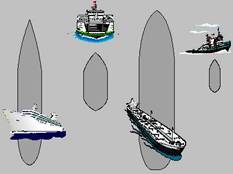
76.Do you think a ship's trim has any influence on steering abilities?
- No, the ship
will have the same steering ability unaffected by trim.
- Yes, a ship
usually steer better if trimmed by the bow.
- No, it is
usually best to have no trim at all.
- Yes, the ship
usually steer better if trimmed by the stern.
STABIL7.jpg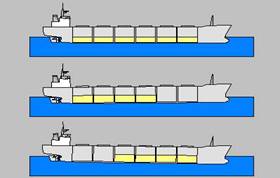
77.'Overshoot' is an expression we use when talking about a
ship's steering ability. What is the definition of this expression?
- It is how
many degrees a ship continues to turn after you apply counter-rudder.
- It is the way
a ship turns when you put the helm in a hard over position.
- It is the way
a ship continues to turn when the helm is put amidship.
- It is the way
a ship shoots forward when you give ' a kick ahead'.
STABIL9.jpg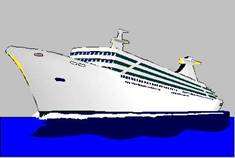
78.'Overshoot' is an expression we use when talking about a
ship's steering ability. What is the best way to determine how the
'overshoot' is on your ship?
- Do a 20/20
degrees zig-zag manoeuvre.
- Do a 360
degrees turning circle.
- Do a 540
degrees turning circle.
- Do a standing
turn.
STABIL2.jpg
80.A balanced rudder has some of the rudder area forward of the rudder
axis. About how much area should this be to call it a balanced rudder?
- It should be
about 50%.
- It should be
about 5%.
- It should be
about 55%.
- It should be
about 20%.
STABIL13.jpg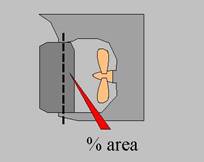
81.Do you think there is any reduction in the rudder lift force if the
propeller is stopped?
- Yes, we will
loose about 10% of the lift force.
- No, we will
maintain about 90% of the lift force
- No, the lift
force is not effected by the propeller.
- Yes, the lift
force will be dramatically reduced.
STABIL15.jpg
82.The rudder is in hard over position, propeller stopped. The ship is
turning slowly. What can we do to make her turn faster without increasing
forward speed?
- Give slow
ahead and leave her in that position
- Give half
astern as this will increase rate of turn.
- Give a kick
ahead.
- Give full
astern until ship is stopped, then full ahead again with rudder hard over.
STABIL16.jpg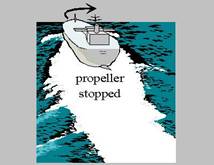
83.What is the correct way in approaching the SPM, taking the
prevailing wind, current and waves into consideration?
- As in example
3
- As in example
4
- As in example
2
- As in example
1
MOOR6.jpg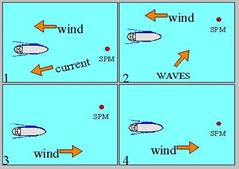
86.The maximum rudder angle on your ship is 35 degrees. Do you think
this is the angle that the rudder is most effective?
- No, the most
effective rudder angle is about 25 to 30 degrees. This is because the
rudder is 'stalling' at 35 degrees angle
- No, the
rudder is most effective at angles between 10 and 20 degrees
- Yes, the
rudder is most effective at max angle
- No, the
rudder is most effective at small rudder angles
STABIL19.jpg
87.The rudder is hard over, full ahead in shallow water.How much lift
force remains when the engine is stopped?
- About 80%
- About 5%
- About 10%
- About 50%
STABIL15.jpg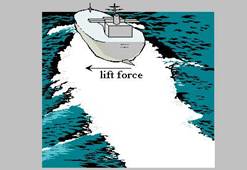
90.Which of the alternative methods of using a tug when escorting your
ship through narrow waters do you think is the most effective in case you loose
steering power?
- Running free
alongside, ready to be made fast (figure 2)
- Made fast
forward on either shoulder, ready to push (figure 3)
- Made fast in
a line at the bow (figure 1)
- The tug`s bow
against my stern, made fast with lines. By moving the tug to either side
of my stern, this will help to steer the ship (figure 4)
STABIL24.jpg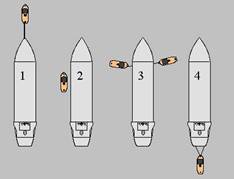
92.Consider the situation sketched below. How will you distribute the
power of the tugs when you want to move the ship sideways without any yaw?
- Equal power
on both tugs
- Full power on
the forward tug, the stern tug should hold back
- Full power on
the forward tug, reduce on the aft tug while checking the gyro
- Full power on
the aft tug, stop on the forward tug
STABIL25.jpg
93.Consider the situation sketched below. How will you distribute the
power of the tugs when you want to move the ship sideways without any yaw?
- Full power on
the aft tug, reduce on the forward while checking the gyro
- Full power on
the aft tug, stop on the forward tug
- Equal power
on both tugs
- Full power on
the forward tug, the stern tug should hold back
STABIL26.jpg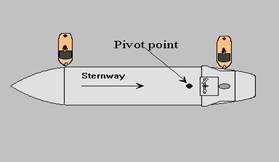
94.Consider the situation sketched below. How will you distribute the
power of the tugs when you want to move the ship sideways without any yaw?
- Equal power
on both tugs while checking the gyro
- Full power on
the aft tug, stop on the forward tug
- Full power on the aft tug, reduce on the
forward tug
- Full power on
the forward tug, the stern tug should hold back
STABIL27.jpg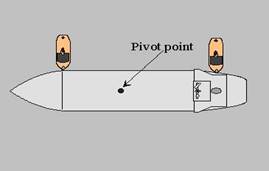
96.What is meant when a vessel is said to have sinkage?
- Sinkage is
the extra draft a vessel obtains when she is comparatively heavily loaded
both ends
- Sinkage is
the extra draft a vessel obtains when she is comparatively heavily loaded
amidship
- Sinkage is
the change in draft a vessel obtains when moving through the water
- Sinkage is
the deepest draft a vessel obtains aft when moving through the water
CANAL2.jpg
97.You are in a 360 degrees turn with engine full ahead. If you reduce
speed during the turn, do you think there will be a change in turning diameter?
- No, the
turning diameter will not change if I reduce speed
- No, the
turning diameter will only change if I
reduce rudder angle
- Yes, the
turning diameter will increase if I reduce speed
- Yes, the
turning diameter will be smaller if I reduce speed
STABIL31.jpg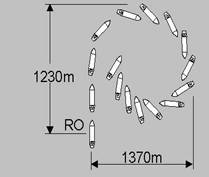
98.You have made a turning circle at full speed in deep water. You are
now going to make one with initial speed, slow ahead. Do you think the diameter
will differ from that of initial full ahead?
- Yes, it will
be much greater with slow ahead
- Yes, it will
be a large difference in the turning diameter between full and slow ahead
- The diameter
will be the same whatever initial speed we have when starting the turn
- Yes, it will
be much smaller with slow ahead
STABIL31.jpg
99.You have made a turning test on full speed in deep water. You are
now going to make a test in shallow water. Do you think the turning diameter
will be the same?
- No, the
turning diameter will be increased in shallow water
- No, the
turning diameter will be smaller in shallow water
- Yes, the
turning diameter will be the same for all dephts
- Yes, it will
be the same provided the UKC is 25%-50%
STABIL31.jpg
101.Consider the situation sketched below. What can happen if the
tugmaster is not careful?
- The tug may
be pushed away from the ship and thus unable to assist your vessel
- The stern of
the tug may be sucked into your bow
- The tugmaster
may loose control and ram your bow with possible damage to your ship
- The tug may
be turned across your bow with the danger of being turned over
STABIL29.jpg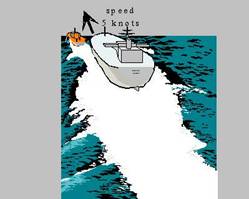
102.For which type of vessel is sinkage most pronounced?
- Supply and
anchorhandling vessels
- Cargoliner
- High block
coefficient vessel
- Vessel with a
very wide beam compared to length
CANAL3.jpg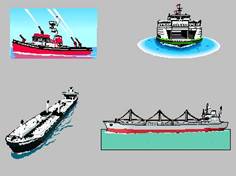
103.For which type of vessel is squatting most pronounced?
- Cargoliner
- Vessel with a
very wide beam compared to length
- Supply and
anchorhandling vessel.Fireboat etc.
- Vessel with a
high block coefficient
CANAL3.jpg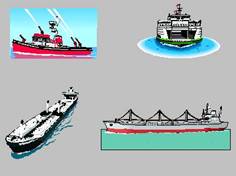
106.Who is responsible for the number and use of tugs during mooring?
- The Master
- The Pilot
- Vessels Agent
in Port
- Port
Authorities
RADAR8.jpg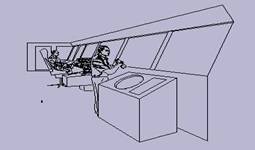
107.The vessel will anchor with Pilot onboard. You are the duty
officer on bridge. What isyour main duty?
- Follow Pilots
order
- No duty when
Pilot onboard
- Follow the
Master`s order
- Check the
position only
RADAR8.jpg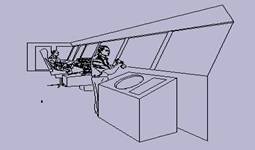
109.Vessel will leave anchorage. You will heave up the anchor. How and
to whom will you report the status of the anchor?
- To the
officer on duty on the bridge
- To the Chief
Officer
- To the master
according to his instructions
- No need
report
NAV13.jpg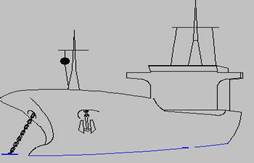
110.M-When Sen. Deck Off. Of both vessels involved have decided which
will be the last lines to be let go whilst unmooring, these lines should be
made fast as follows on the ship accepting the lines.
- By turning up
the rope on the bitts, fig.1
- By putting
the eye on the bitts, fig.2
- By keeping
the rope on the warping drum of adeck winch, fig.3
- By shackling
the eye to a strongpoint, fig.4
DBANK2.jpg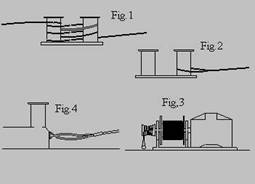
114.The vessel is going through the illustrated turning procedure.
What is the name of this turning procedure?
- Scharnow Turn
- Williamson
Turn
- Direct Turn
- Evinrude Turn
REBO3.jpg
115.The vessel is going through the illustrated turning procedure.
What is the name of this turning procedure?
- Direct Turn
- Evinrude Turn
- Williamson
Turn
- Scharnow Turn
REBO4.jpg
116.The vessel is going through the illustrated turning procedure.
What is the name of this turning procedure?
- WilliamsonTurn
- Evinrude Turn
- Direct Turn
- Scharnow Turn
REBO5.jpg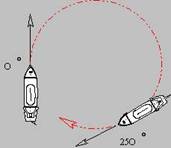
117.Replies from life-saving stations or maritime rescue units to
distress signals made. What is the meaning of the signal?
- In general:
Negative (Specifically: Slack away-avast hauling)
- Landing here
is highly dangerous
- In general:
Positive (Specifically: Rocket line is held, tail block is made fast, haul
away, etc)
- You are
seen-assistance will be given as soon as possible
REBO11.jpg
118.Signals used by aircraft engaged in search and rescue operations
to direct ships towards an aircraft, ship or person in distress. What is the
meaning of the signal?
- Landing here
is highly dangerous
- Require
medical assistance
- The aircraft
is directing a vessel towards an aircraft or vessel in distress
- The
assistance of the vessel is no longer required
REBO12.jpg
119.Signals used by aircraft engaged in search and rescue operations
to direct ships towards an aircraft, ship or person in distress. What is the
meaning of the signal?
- The
assistance of the vessel is no longer required
- The aircraft
is directing a vessel towards an aircraft or vessel in distress
- Landing here
is highly dangerous
- Require
medical assistance
REBO13.jpg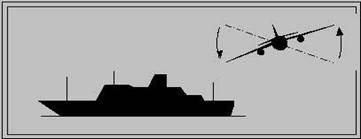
120.What is the meaning of this signal performed by an aircraft to
survivors on the surface? Procedures performed by an aircraft as illustrated
below.
- The aircraft
has to leave the survivors due to fuel shortage
- The aircraft
has to leave, but will return within 5 hours
- The aircraft
wishes to inform or instruct survivors
- Please try to
contact nearest coastal radio station
REBO15.jpg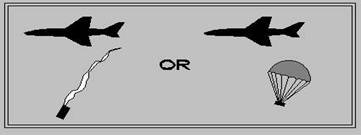
121.All designated SAR aircraft and civil aircraft carry equipment
operating on the international aeronautical distress frequencies (amplitude
modulation). The aeronautical distress frequencies are ?
- 123,8MHz
and/or 247,6MHz
- 243,1MHz
and/or 486,2MHz
- 121,5 MHz
and/or 123,1 MHz (civil aviation)
- 127,8MHz
and/or 349,6MHz
REBO60.jpg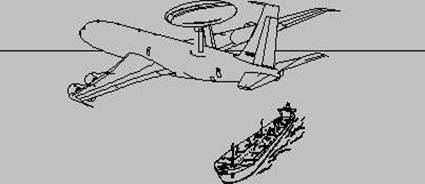
122.What is the search pattern system called where 1 ship and 1 plane
are involved?
- SOLAS
- Flight Cross
- Coordinated
Crab
- Patterton
REBO61.jpg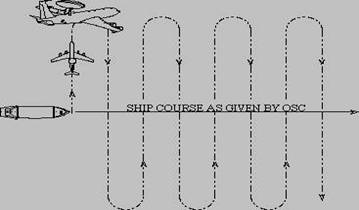
123.What is the search pattern system called using more than one ship?
- Parallel
System
- Cross System
- Circle System
- Triangle
System
REBO62.jpg
124.What is the possible position of a ship in distress called?
- R-Point
- D-Point
- S-Point
- Zero-Point
REBO85.jpg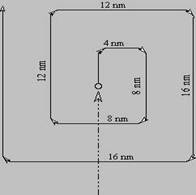
125.Every inflatable liferaft, inflatable lifejacket and hydrostatic
release units shall be serviced:
- Every 18
months
- Every 36
months
- Every 12
months
- Every 24 months
EVAC13.jpg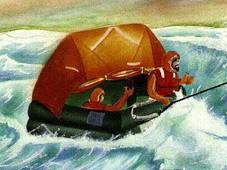
126.What is a hydrostatic release unit?
- An important
part connected to the sea-anchor
- A unit for
inflating the liferaft
- A unit which
automatically releases the liferaft/lifeboat at a depth of approx 4 metres
- A unit which
automatically all securing when abandon the vessel
REBO92.jpg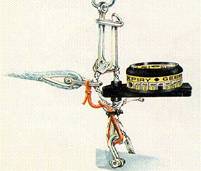
127.A person wearing lifejacket or immersion suit, shall be able to
turn from a face-down to a face-up position in not more than:
- 8 seconds
- 10 seconds
- 15 seconds
- 5 seconds
REBO93.jpg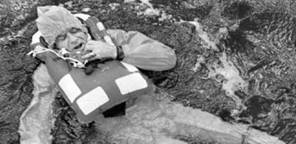
129.How many MOB (combined light and smoke) signal buoys are placed on
board, and where are they located?
- 2 pcs (1 on
each bridgewing)
- 3 pcs (1 aft
and one on each bridgewing)
- 4 pcs (1 fwd,
1 aft and one on each bridgewing)
- 5 pcs (1
midships, 1 aft, 1 fwd and 1 on each bridgewing)
REBO2.jpg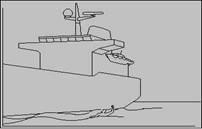
130.You are duty officer on the bridge. An eye-witness is reporting
man-overboard. Which of the following actions are to be considered as the
correct manoeuvre in this situation?
- Direct Turn
- Evinrude Turn
- Williamson
Turn
- Scharnow Turn
REBO41.jpg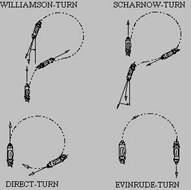
131.You are standing on the bridge and are eye witness to a man
falling over board. Which of the following actions are to be considered as the
correct manoeuvre in this situation?
- Direct Turn
- Williamson
Turn
- Scharnow Turn
- Evinrude Turn
REBO41.jpg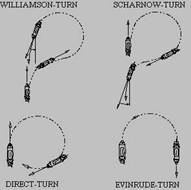
132.You are duty officer on the bridge. A person is reported missing.
Which of the following actions are to be considered as the correct manoeuvre in
this situation?
- Direct Turn
- Evinrude Turn
- Scharnow Turn
- Williamson
Turn
REBO41.jpg
133.What is the signal used by a life saving station or rescue unit
indicating that distress signals are observed at night time?
- 3 White star
rockets
- 2 Blue star
rockets
- 3 Yellow star
rockets
- 1 Green star
rocket
REBO53.jpg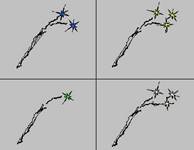
134.What is the search system pattern called using 1 vessel?
- Square System
- Single System
- Lonely System
- Sector System
REBO102.jpg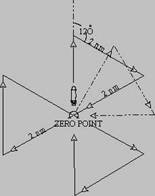
135.A 6-men inflatable liferaft shall be carried as far forward as is
reasonable and practicable. Where is the best stowing position?
- Under the
forecastle
- Aft of the
forecastle, secured with wire and turnbuckle
- All forward
on the forecastle and secured with the use of hydrostatic release device
- Aft of the
forecastle secured with the use of hydrostatic release device
REBO101.jpg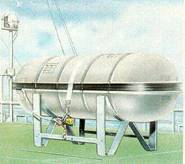
137.The distress message is used when the vessel is threatened by a
serious and imminent danger and is in need of immediate assistance. What is the
telegraphy and telephony distress message like?
- SOS
9Telegraphy)/MAYDAY (Telephony)
- XXX
(Telegraphy)/PAN-PAN (Telephony)
- FFF(Telegraphy)/RESCUE-RESCUE
(Telephony)
- TTT
(Telegraphy)/SECURITE (Telephony)
REBO96.jpg
138.What is the minimum number of lifebuoys carried by a cargo vessel
of more than 200 metres in length?
- 18
- 20
- 14
- 12
REBO94.jpg
139.What is the name of the IMO publication giving guidance in Search
and Rescue operations?
- EPIRB
- RASSO
- IAMSAR
- AMVER
REBO68.jpg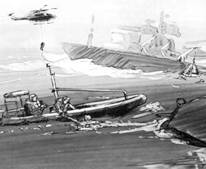
140.What is the Morse Code Signal Letter used by a vessel in response
to an aircraft is request for assistance in a rescue operation?
- Y
- S
- A
- T
REBO66.jpg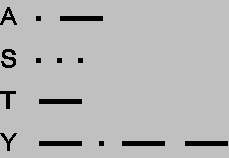
141.Romanian merchant-and fishing vessels have to participate in the
AMVER system. What is the purpose of AMVER?
- Automated
mutual vessel rescue system for plotting vessels with the purpose of
rescue
- World wide
telecommunication system
- A NATO
reporting system in case of joining a war-convoy
- Weather
routing
REBO44.jpg
142.What colour flare is used to signal a safe landing for small
boats?
- Green
- Yellow
- Blue
- White
REBO48.jpg
143.If requested by a coastal radio station to participate in a rescue
operation, what is the most important information you may give?
- Your
position, name, call sign and speed
- Your own
cargo owner
- Your
destination
- Your crews
nationality
REBO56.jpg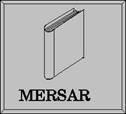
144.Which letter from the Morse code is used to signal a safe landing
place (sound or light)?
- B
- F
- K
- S
REBO49.jpg
145.What colour flare is used to signal a highly dangerous landing
place?
- Red
- Blue
- Orange
- Yellow
REBO48.jpg
146.Which letter from the Morse code is used to signal a highly
dangerous landing place?
- S
- D
- F
- H
REBO51.jpg
147.What is the colour of the smoke signal used by life-saving station
or rescue units indicating that distress signals are observed in daylight?
- Yellow
- Blue
- Green
- Orange
REBO52.jpg
148.Who should be informed first when receiving a distress signal from
an other ship/vessel?
- AMVER
- Associated
Press
- Coast Earth
Station or RCC
- Your own
company
REBO54.jpg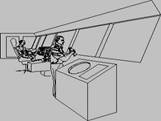
149.What sound signal shall be used on ship`s whistle when
man-over-board?
- 3 long blasts
repeatedly
- 6 short
blasts repeatedly
- 5 short
blasts repeatedly
- 4 long blasts
repeatedly
REBO45.jpg
150.What is a 'Search and Rescue Region' (SRR)?
- An area where
a search and rescue operation is under way
- An area of
limited dimension in which rescue vessels are permanently stationed
- An area of
defined dimensions within which search and rescue services are provided
- An area of
defined dimension where an international organization is responsible for
search and rescue operations
REBO56.jpg
153.Your vessel is acting as the on scene commander during a distress
rescue. Various vessels are interfering the distress traffic on the VHF. What
message would you use to stop them interfering with this traffic?
- Seelonce
mayday
- Seelonce
distress
- Seelonce pan
- Seelonce
securite
COMM3.jpg
155.On which frequencies do most satellite EPIRB's COSPAS/SARSAT
operate ?
- 121.5/406MHz
- 2182 kHz
- 121.5Khz
- 500Khz
COMM21.jpg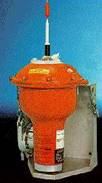
156.On which frequency are navigational and meteorological messages
normally sent on the NAVTEX system?
- 518KHz
- 2182 kHz
- 500KHz
- 2187.2KHz
COMM17.jpg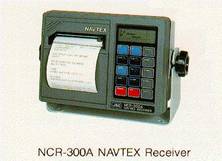
157.By what date must ALL vessels fully comply with GMDSS requirements?
- 1st February
1995
- 1st February
1997
- 1st February
1999
- 1st February
1994
COMM15.jpg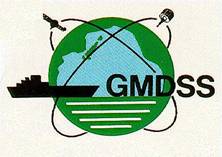
158.Comunications in radio telephony what is the 'URGENCY
CALL' which should be used to indicate that you have a very urgent message
to transmit concerning the safety of another vessel or person?
- Pan Pan (3
times)
- Mayday (3
times)
- Securite (3
times)
- Victor (3
times)
COMM1.jpg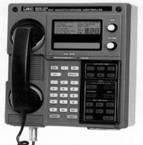
159.You have an important navigational or meteorological message to
transmit. What call should proceed this message when made on the radio telephone?
- Securite (3
times)
- Mayday (3
times)
- Pan Pan (3
times)
- Victor (3
times)
COMM1.jpg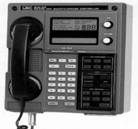
161.On what wave band does the search and rescue radar transponder
operate?
- 9 GHz
- 8 GHz
- 2182KHz
- 6GHz
COMM30.jpg
162.Your vessel is not in distress and not taking part in a distress
operation. How would you impose radio silence on vessels which are interfering
the distress traffic?
- Seelonce Pan
- Seelonce
Securite
- Seelonce
Distress
- Seelonce
Mayday
COMM3.jpg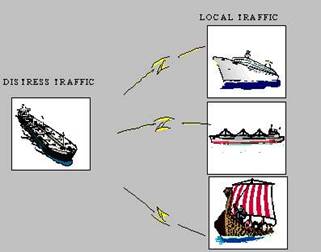
163.If requested by a coastal radio station to participate in a rescue
operation, what is the most important information you may give?
- Your
position, name, call sign and speed
- Your own
cargo owner
- Your
destination
- Your crews
nationality
REBO56.jpg
165.The portable VHF radio-telephones required to be carried by GMDSS regulations
should have which channels as a minimum?
- Channel 16
and minimum others simplex channel in VHF band
- Channel 16
only
- Channels 13
and 16
- Channels 6
and 16
COMM13.jpg
166.What is the minimum number of portable two way VHF
radio-telephones for use in survival craft, that should be carried onboard
vessels which comply with GMDSS regulations > 500 GRT ?
- minim 2 sets
- minim 1set
- There is no
requirement to carry them
- minim 3 sets
COMM13.jpg
168.What is the meaning of this flag in the International code of
signals?
- You should
stop your engines and watch for my signals
- You are
running into danger
- I am in
distress and need immediate assistance
- Keep clear of
me, I am manoeuvring with difficulty
COMM5.jpg
169.You are approaching a port when you see three flashing red lights
in a vertical line at the entrance.What does this indicate?
- Vessels may
proceed in with caution
- Use main
channel only as secondary channel closed
- Serious
emergency-all vessels to stop or divert according to instructions
- Port closed
COMM8.jpg
170.In the international code of signals what does this flag mean?
- You should
stop your vessel and watch for my signals
- You are
running into danger
- I am in
distress and need immediate assistance
- I am
manoeuvring with difficulty. Keep clear of me
COMM8.jpg
171.What does this signal indicate?
- A fishing
vessel whose nets have come fast on an obstruction
- A vessel
requiring medical assistance
- I require
assistance
- A fishing
vessel engaged in trawling
COMM9.jpg
172.Which VHF channel should be used for intership navigation safety
communications?
- Ch.13
- Ch.16
- Ch.12
- Ch.06
COMM20.jpg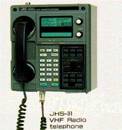
173.Under GMDSS which VHF channel is used for Digital Selective
Calling (DSC)?
- Ch.06
- Ch.13
- Ch.70
- Ch.16
COMM22.jpg
174.On the radio telephony 2182KHz frequency when are the 'silence
periods'?
- For 3 minutes
starting on the hour and half hour
- For 3 minutes
starting at quarter past and 45 minutes past
- For 6 minutes
starting on the hour and half hour
- For 6 minutes
starting at quarter past and 45 minutes past
COMM25.jpg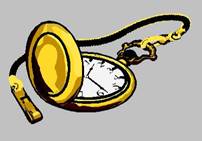
175.Non distress calls on 2182 KHz and VHF channel 16 should not
exceed:
- One minute
- Two minutes
- Three minutes
- Five minutes
COMM1.jpg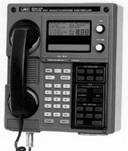
176.What does this two flag hoist signal indicate?
- I am in
distress and require assistance
- Keep clear I
have divers down
- I require
medical assistance
- I require a
tow
COMM28.jpg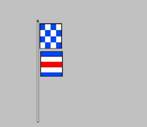
177.You receive a distress alert on HF Radio. What should you do?
- Acknowledge
receipt
- Relay the
message immediately on 2182KHz
- Wait three
minutes and if no acknowledgement is heard from a coast station you should
relay the alert
- No response
is necessary providing the vessel is more than 24 hours away
COMM26.jpg
178.What is the meaning of this single letter signal?
- I am dragging
my anchor
- I require
medical assistance
- I require a
tug
- You are
running into danger
COMM32.jpg
179.What is the meaning of this flag signal?
- G3221
- L3221
- L2330
- L2320
COMM33.jpg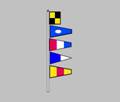
180.Code signals concerning requests and general information on
medical matters normally consist of:
- Letter M plus
two other letters
- Letter H plus
two other letters
- Letter D plus
two other letters
- Letter P plus
two other letters
MED4.jpg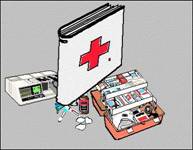
181.Which signal should you send to show that you have completed your
morse code transmission?
- Morse signal
END
- Morse signal
ED
- Morse signal
AR
- Morse signal
EE
COMM37.jpg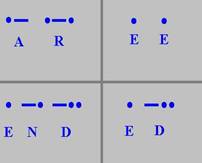
182.Under GMDSS rules the trading area A1 can be considered to be:
- Within the
coverage of INMARSAT
- Polar region
- Within the
radiotelephone coverage of at least one VHF coastal station in which
continuos DSC available
- Within range
of MF coast radio stations
COMM15.jpg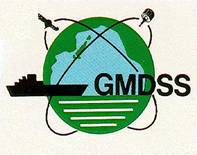
183.Under GMDSS rules the trading area A3 can be considered to be:
- Within VHF
range
- Within MF
range
- Polar region
- An area,
excluding sea areas A1 and A2, whithin
the coverage of on INMARSAT geostationary satelitte in which
continues allerty is available
COMM15.jpg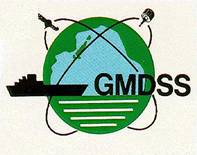
188.Which one of the listed requirements regarding lifebuoys do not
correspond to present regulations? (SOLAS III/31)
- Every
lifebuoy shall be constructed of inherently buoyant material or have
sifficient air compartment for buoyancy
- Every
lifebuoy shall have a mass of less than 2.5 kilos
- Every
lifebuoy shall, if being fitted with light or smoke signal, have a weight
of not less than 4 kilos
- Every
lifebuoy shall be fitted with a grab line
SOL7.jpg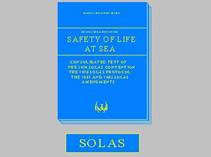
191.An alarm signal consisting of seven short blast followd by one
prolonged blast is sounded by the ship`s whistle and alarm bells. What are you
to do?
- Go to your
lifeboat station
- Go to your
fire station
- Report on the
bridge (deck crew) or engine room (engine crew) for further orders
- Go to (or
remain in) your cabin and await further orders
ACT12.jpg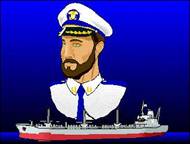
194.Which one of the given requirements regarding survival craft
muster and embarcation arrangements do not correspond with present
regulations? (SOLAS III/10)
- Searchlight
to be provided at the launching station
- Davit-launched
surviuvalcraft muster and embarcation stations shall be arranged to enable
stretchers to be placed in survival craft
- Muster and
embarcation stations shall be readily accesible from accomodation and work
areas
- Where
necessary, men shall be provided for holding the davit-launched craft
against the shipside for embarcation
SOL7.jpg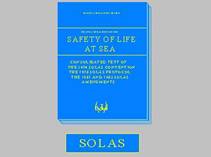
195.Which one of the listed requirements regarding the stowage of a
survival craft do not correspond with
present regulations? (SOLAS III/13.1)Each survival craft shall be
stowed:
- So that
neither craft nor stowage arrangement interfere with the general operation
of the ship
- As near the
water surface as is safe and practicable
- In a state of
continous readiness so that two crewmembers can prepare for embarcation
and launching in less than 5 minutes
- In a secure
and sheltered position and protected from damage by fire or explosion
SOL7.jpg
196.Which one of the listed requirements regarding the stowage of
lifeboats and liferafts do not correspond to present regulations? (SOLAS
II/13.3-13.6)
- Liferafts
intended for throw-overboard launching shall be stowed midships secured to
means for transfer to either side
- Lifeboats
shall be stowed attached to launching appliances
- Liferafts
shall be so stowed as to permit manual release from their securing
arrangements
- Davit-launched
liferafts shall be stowed within reach of the lifting hooks unless
adequate means of transport is provided
SOL7.jpg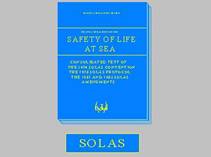
197.Which one of the listed requirements regarding the stowage of
rescue boats do not correspond to present regulations? (SOLAS III/14)
- Rescue
boats shall be stowed in aposition
suitable for launching and recovery
- Rescue boats
shall be stowed so neither the rescue boat nor its launching arrangements
will interfere with any survival craft at any other launching station
- Rescue boats
shall be stowed attached to launching appliances
- Rescue boats
shall be stowed in a state of continous readiness for launching in not
more than 5 minutes
SOL7.jpg
199.Which one of the listed requirements regarding the launching and
recovery arrangements for rescue boats do not correspond to present
regulations? (SOLAS III/16)
- The release
mechanism shall be of an automatic type approved by the Administration
- Embarcation
and launching arrangements shall be such that the rescue boat can be
boarded and launched in the shortest possible time
- Launching
shall be possible at ship`s headway speed up to 5 knots in calm weather
- Rapid
recovery shall be possible with the boats full compliment of persons and
equipment
SOL7.jpg
200.How often are abandon ship drill and fire drill required to be
held on passenger ships, according to SOLAS?
- Weekly
- Every second
week
- Once a month
- Every third
week
SOL10.jpg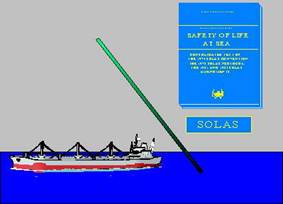
204.How much liferaft capacity should be provided on a conventional
cargo ship of more than 85 meters in length, built after July 1986?
- 25% of the
complement on each side of the ship
- 75% of the
complement on each side of the ship
- 100% of the
complement if it can be readily launched on either side of the ship. If it
cannot be readily launched on either side, 100% must be provided on each
side
- 50% of the
complement on each side of the ship
REBO101.jpg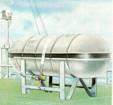
205.How much liferaft capacity should be provided on a conventional
cargo ship of more than 85 meters in length?
- 100% of the
ships complement on each side
- 50% of the
ships complement on each side
- 125% of the
ships complement on each side
- 150% of the
ships complement on each side
EVAC16.jpg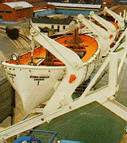
206.During helicopter evacuation of an injured man, what course should
the ship steer?
- Directly into
the wind
- With the wind
fine on the bow opposite to the helicopter operating area
- As instructed
by the helicopter pilot
- With the wind
astern so that the effect of the wind is reduced as much as possible
REBO70.jpg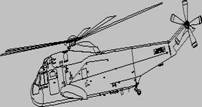
208.How ofter should the lifeboat wire falls be turned and renewed?
- Turned at
intervals of not more than 30 months and renewed every 5 years
- Turned every
2 years and renewed every 4 years
- Turned every
30 months and needs only to be renewed if the wire is in poor condition
- Renewed every
three years
EVAC16.jpg
209.A ship is fitted with david launched liferafts. How often should
onboard training take place, including, when practicable, the inflation and
lowering of a liferaft?
- Every three
months
- Every year
- Every four
months
- Every month
EVAC15.jpg
210.Having boarded the liferaft, how do you release the painter?
- Cut it with
the axe provided
- Wait for it
to break as it is provided with a weak link
- Cut it with
the safety knife stowed on the exterior of the canopy close to the painter
attachment point
- Let go the
quick release toggle
REBO91.jpg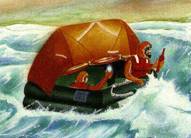
211.How many thermal protective aids are carried in each liferaft?
- 10%of the
number of persons the liferaft is designed to carry, or two, whichever is
the greatest
- 4
- 3
- Nil
REBO91.jpg
212.How many buoyant smoke signals are carried in each liferaft?
- 6
- Nil
- Doua
- 4
REBO91.jpg
213.How many hand held distress flares are carried in each liferaft?
- 4
- 12
- 6
- 2
REBO91.jpg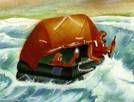
214.How many rocket parachute flares are carried in each liferaft?
- 6
- 12
- Nil
- 4
REBO91.jpg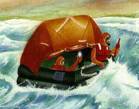
215.How many buoyant smoke signals are carried in each liferaft?
- 4
- 6
- 12
- 2
EVAC6.jpg
216.How many hand held distress flares are carried in each lifeboat?
- 12
- 2
- 6
- 4
EVAC6.jpg
217.How many rocket parachute flares are carried in each lifeboat?
- 6
- 12
- Nil
- 4
EVAC6.jpg
218.How many 'thermal protective aids' are required to be
carried on vessels with open lifeboats?
- Each lifeboat
should carry the same number of thermal protective aids as the number of
persons it is designed to carry
- They are not
required, providing the boat has a canvas canopy which can be rigged in
cold weather
- 10 in each
lifeboat
- One for each
person on board who is not provided with an immersion sui
EVAC4.jpg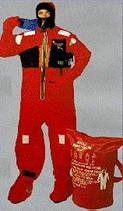
219.What is the minimum number of immersion suits that are required to
be provided for each open lifeboat under SOLAS rules?
- Nil
- 6
- 3
- One per
person
EVAC4.jpg
220.How would you know how many people a lifeboat is supposed to hold?
- Ask one of
the deck officers
- No fixed
number as it depends on the people`s size
- The number of
persons should be clearly stated on the outside of the boats bow
- Fill the boat
up until no more space is left
EVAC3.jpg
224.How much water would you allow per person as officer in charge of
the lifeboat, following an abandon ship operation?
- Nothing for
the first 24 hours, then 1/2 litre per day (more in the tropics)
- 1/2 litre
immediately, followed by 1/4 litre per day (more in the tropics)
- Nothing for
the first 48 hours, then 1/4 litre per day (more in the tropics)
- Nothing for
the first 24 hours, then 1/4 litre per day (more in thetropics)
SOL68.jpg
225.How much water per person is provided in a lifeboat not equiped
with a desalting apparatus?
- 3 litre
- 5 litre
- 2 litre
- 1,5 litre
SOL68.jpg
226.How much water per person is provided in a lifeboat not equiped
with a desalting apparatus?
- 1,5 litre
- 5 litre
- 2 litre
- 3 litre
EVAC15.jpg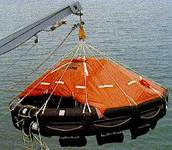
227.You are approaching the shore in a lifeboat when you see a person
holding a white flag. He is moving it in a horizontal motion from side to side.
What does this indicate?
- Stay
offshore, rescue boat is coming
- Standby for a
rocket line to assist you
- It is OK to
land here
- Landing here
is highly dangerous
EVAC26.jpg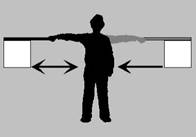
228.Approaching the shore in a lifeboat you see a person holding a
white flag which he moves in a vertical motion. What does this indicate?
- Wait
offshore, assistance will be sent to you
- Landing here
is highly dangerous, you should proceed in the direction of the flag
- This is the
best place to land
- Landing here
is highly dangerous
EVAC28.jpg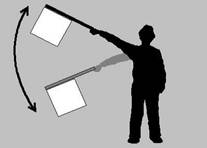
229.Which of the following actions should be done before throwing this
type of inflatable liferaft over the side?
- Check that
the painter is made fast to a secure point and that the sea below is clear
- Inflate it on
deck and then launch it if clear below
- Take the top
off the container to enable raft to inflate once in the water. If all
clear, throw raft over side
- Disconnect
the painter and launch it, checking that all is clear below
REBO101.jpg
230.How should the painter of a liferaft which is fitted with a
hydrostaticrelease be secured to the ship?
- Directly to a
secure point on the ship
- Secure to the
part of the hydrostatic release that is designed to break free
- It should not
be secured in any way
- Secured via a
weak link to a secure part of the ship
REBO101.jpg
231.How much food per person is supplied on a liferaft?
- Not less than
5000kj
- Not less than
20000kj
- None-only
barley sugar sweets supplied
- Not less than
10000kj
SOL10.jpg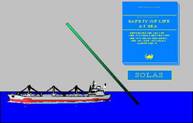
232.How much food per person is supplied in a lifeboat?
- Not less than
10000kj
- Not less than
5000kj
- Not less than
20000kj
- None-only
barley sugar sweets supplied
EVAC16.jpg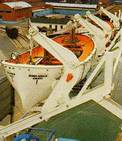
233.For how long and at what speed is a fully loaded lifeboat designed
to operate in calm weather?
- 6 knots for
24 hours
- 4 knots for
48 hours
- 10 knots for
24 hours
- 3 knots for
24 hours
EVAC3.jpg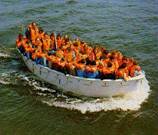
234.How many Radar Transponders (SART) are required to be carried
onboard a ship for use in survival crafts?
- One in each
lifeboat
- Two on each
side of the ship
- 2 pieces for
ships of 500 GRT and upwards and all passager ships
- One on each
side of the ship
COMM30.jpg
235.GMDSS regulations require that vessels carry two-way VHF for
survival craft. How many are required, and when do the regulations apply?
- None at
present. 3sets on all ships from August 1995
- One per
lifeboat and one spare from August 1993
- 3 sets for
ships of 500 GRT and upwards and all passager ships
- 3 sets. All
vessels from August 1993
COMM13.jpg
236.What is the minimum number of channels required for the portable
two-way VHF`s for survival craft?
- Channel 16
only
- Channels
16&12
- Channels
6,12&16
- Channel 16
and minimum others simplex channel in VHF band
COMM13.jpg
237.During a helicopter evacuation, the helicopter lowers his winch
wire to the deck. Which of the following should NOT be done with the winch wire?
- All of the
mentioned actions
- Secure it to
a strong point on deck
- Touch the
wire with bare hands
- Secure it to
the deck with a weak link
REBO70.jpg
238.How should the hook be released from a david lowered liferaft?
- Wait until
the raft is waterborne, then pull the lanyard
- Cut the weak
link on the wire with the axe provided
- Just prior to
reaching the water, the lanyard should be pulled. This sets the hook which
will automatically release once the raft is waterborne
- Unscrew the
shackle pin
EVAC15.jpg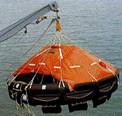
239.How many rescue boats should be provided on passenger ships of 500
gross tons and above?
- One up to
2000 gross tons, then two rescue boats
- None
providing the ship has lifeboats
- Two
- One
EVAC41.jpg
240.What equipment is provided in a liferaft to help you keep warm in
cold weather?
- At least 10%
of the rafts complement with a minimum of 2 thermal protective aids are
provided
- Thermal
protective aids for each person the floor of the raft has a second layer
which can be inflated to
- Help
insulation, in addition to the thermal protective aids (10% of complement,
minimum 2)
- The floor of
the raft has a second layer which can be inflated to give additional
insulation from the cold water
EVAC13.jpg
241.You are starting to get low on water in the lifeboat. What should
you do?
- Collect rain
water
- Use sea water
- Mix sea water
with 50% fresh water
- Drink urine
SOL68.jpg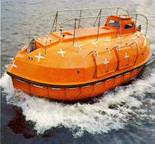
242.You have abandoned ship in a liferaft. Which of the following
actions should you take?
- Organize a
lookout system
- Start
paddling in the direction of the nearest land
- Join up with
any other survival craft and stream the sea anchor
- Organize a
lookout system and join up with other survival craft if possible. You
should also stream the sea anchor
REBO91.jpg
244.A lifejacket should be provided with:
- A light
- On ships
built after February 1992 all lifejackets should be fitted with a light
- A whistle and
a light
- A whistle
REBO30.jpg
245.An enclosed lifeboat is fitted with a self-contained air support
system. With the engine running, what is the minimum period of time the air
should remain safe and breathable?
- 10 minutes
- 5 minutes
- 20 minutes
- 30 minutes
SOL68.jpg
246.During search and rescue operations an aircraft crosses the wake
of your vessel close astern at low altitude. What does it indicate, if the
aircraft rocks its wings, opens and closes the throttle or changes the
propeller pitch?
- Follow my
direction to the ship in distress
- Please remain
where you are and await further instructions
- Please call
me on VHF 16 as you are not answering my calls
- Your assistance
is no longer required
REBO13.jpg
247.What signal, if any, is specified in SOLAS as the 'Abandon
ship' signal?
- Seven short
blasts followed by one long blast
- Four long
blasts
- The
'Abandon ship' signal is not specified, only the general
emergency alarm signal is stated
- Six short
blasts followed by one long blast
REBO45.jpg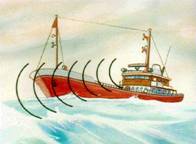
248.Passenger ships have a normal requirement of 1 lifejacket per
person +10% for children. In addition to this, how many lifejackets have to be
provided on deck or at the muster stations?
- 15% extra
- 25% extra
- 5% extra
- 10% extra
REBO30.jpg
249.How ofter should each lifeboat be lowered into the water and
manoeuvred with its operating crew aboard under SOLAS regulations?
- At least
every three months
- Monthly
- At least
every six months
- Once a year
EVAC3.jpg
250.Referring to the SOLAS convention, how often should a crew member
on a cargo ship participate in one abandon ship drill and one fire drill?
- Every second
week
- This is only
required when he joins the ship
- Monthly
- Weekly
SOL10.jpg
253.When is the master required to be on the bridge during transit of
the Suez Canal?
- The master or
this qualified representative must be on the bridge at all times
- At all times
- During
anchoring or tie-up operations only
- When the
pilot is embarking or disembarking
SUEZ1.jpg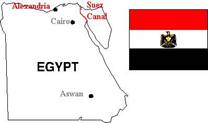
254.Are mooring boats required for vessels transitting the Suez Canal?
- Yes, only
mooring boats hired from shore are accepted
- Mooring boats
are not required
- Mooring boats
are required only for loaded tankers of more than 100 000dwt
- Ships can use
their own boats if they cannot safely lift hired boats, but boat crews
must be hired from shore
SUEZ1.jpg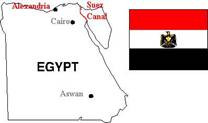
255.Searchlights must be provided for night navigation in the Suez
Canal. Which of the listed requirements are correct?
- Only
projectors hired from the Canal Mooring and Light Company are permitted
- If vessels
have their own projector, an extra fee will be levied on the vessel
- All vessels
must provide their own projector
- Vessels with
bulbous bow, LPG-and LNG-vessels must provide their own projector
SUEZ1.jpg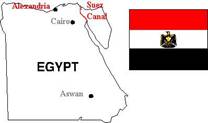
256.Rigging of the Pilot Ladder and embarkation/disembarkation of a
pilot shall be supervised by:
- An
experienced AB
- The Bosum
- The Sen. Off
.Deck only
- A responsible
Officer
PILOT1.jpg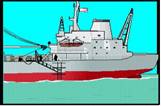
257.The maximum height that a pilot should be required to climb on a
pilot ladder before reaching the deck or stepping onto an accommodation ladder
is:
- 6 mtrs
- 12mtrs
- 15 mtrs
- 9 mtrs
PILOT2.jpg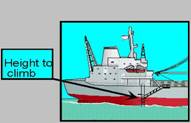
258.If making a new pilot ladder onboard, which of the following ropes
would you use in its construction as side ropes on which the steps are
fastened?
- Polypropylene
rope
- Polyester
rope
- Uncovered
manila rope
- Nylon rope
PILOT3.jpg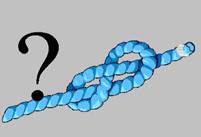
259.A pilot ladder shall, to prevent twisting, be fitted with
'battens'. The lowest batten shall be the 5th step from the lower end
of the pilot ladder. At what intervals should there be further battens upwards
on the pilot ladder?
- At intervals
not exceeding 9 steps
- At intervals
not exceeding 12 steps
- At intervals
not exceeding 15 steps
- It does not
matter where the battens are fitted
PILOT5.jpg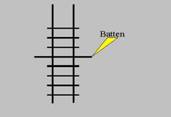
260.When a bulwark ladder is used for the pilot to step down onto the
deck, such ladder shall have two stanchions provided, which are at least 40 mm
in dia, between 70 and 80 cms apart, and least 1.2 mtrs higher than the
bulwark. Such stachions shall be rigidly secured:
- At or near
the bulwark top level
- At the deck
level
- It does not
matter where they are secured
- At the deck
level and near the bulwark top level
PILOT6.jpg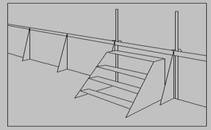
261.If you are to use a newly installed mechanical pilot hoist
arrangement to pick up a pilot:
- It is
necessary to keep a pilot ladder rolled and ready on deck adjacent to the
pilot hoist
- It is
necessary to keep any sort of ladder ready on deck next to the pilot hoist
- It is not
necessary to have any backup ladder ready
- It is
necessary to have a pilot ladder rigged and reaching from deck to the
waterline, next to the pilot hoist
STABIL1.jpg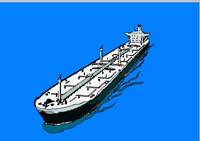
264.Your vessel is moving in Panama Canal waters. When must the master
or his qualified representative be on the bridge?
- When at
anchor or alongside a pier
- When entering
or leaving locks only
- When going
through the Gaillard cut only
- At all times
PANAMA1.jpg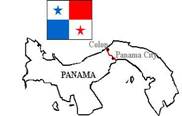
265.Your vessel is moving in Panama Canal waters. When must the master
be on the bridge?
- At all times
- When his
qualified representative is present
- When entering
or leaving a lock, passing through Gaillard cut, berthing&unberthing,
anchoring or heaving anchor
- When entering
or leaving a lock only
PANAMA1.jpg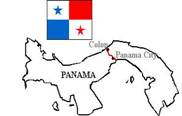
266.Your vessel is moving in Panama Canal waters. When must a regular
engineer be on watch in the engine room?
- At all times
- When the
chief engineer is attending the engine room
- Not necessary
to be in the engine room if the unmanned engine room status is practised
and alarms have been checked
- When
requested by the pilot
PANAMA1.jpg
267.Your vessel is moving in Panama Canal waters. When must the chief
engineer remain on duty in the engine room?
- Only when
requested by the pilot
- At all times
- When
approaching or passing locks and Gaillard cut
- Only if the
regular engineer is off duty
PANAMA1.jpg
270.Who is authorized to prescribe use of locomotives and canal
deck-hands during transit of the Panama Canal?
- The Canal
authorities
- The pilot
- The master
- The Cristobal
or Balboa harbour masters respectively
PANAMA1.jpg
271.Which one of the listed requirements regarding enclosures of
totally enclosed lifeboats do not correspond to present regulation? The
enclosures shall be provided with:
- Windows on
both sides which can be closed
watertight and opened for ventilation
- Access
hatches which can be closed watertight
- Access
hatches capable of being opened and closed from both sides
- Arrangement
for rowing
SOL68.jpg
272.Which one of the listed requirements regarding lifeboat propulsion
do not correspond to present regulations?
- The engine
shall beprovided with an electric power starting system with rechargeable
energy batteries
- Every
lifeboat shall be powered by a compression ignition engine using fuel with
a flamepoint of not less than 44grdC
- Means shall
be provided for recharging all engine-starting, radio and searchlight
batteries
- Water
resistant instruction for starting and operating the engine shall be
provided
SOL68.jpg
276.Which one of the listed requirements regarding rescue boats do not
correspond to present regulation? Rescue boats shall:
- Have
self-bailing arrangements
- Have
permanent arrangement for towing
- Be capable of
manoeuvring at speeds up to 6 knots
- Be capable of
carrying at least 5 persons seated and one person lying down
REBO68.jpg
277.Which one of the listed requirements regarding inflatable liferafts
do not correspond to present regulations? The inflatable liferaft shall:
- Have at least
two entrances
- Have a floor
capable of being sufficiently insulated against cold by means of inflated
compartments, or by equally efficient means not dependant on inflation
- Maintain its
form after inflation with full complement
- Be prevented
from pressure exceeding twice the working pressure, either by relief
valves or by limited gas supply
REBO101.jpg
280.Which one of the listed requirements regarding rigid liferafts do
not correspond to present regulations? The liferaft shall have:
- A manually
controlled lamp, visible of at least 2 miles, fitted at the top of the
canopy
- A manually
controlled lamp fitted inside the liferaft
- All entrances
fitted with rigid boarding ramps for boarding the liferaft at sea
- Floor
preventing the ingress of water
SOL7.jpg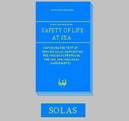
281.Which one of the listed requirements regarding hydrostatic release
unit for float free arrangements for liferafts does not correspond to present
regulations? Hydrostatic release units shall:
- Be
constructed of compatible material to prevent malfunction
- Be
constructed as to prevent release by seas washing over the unit
- Be provided
with a painter system with a breaking strength of not more than 2.2 kN
- Be
permanently marked with type and serial number
REBO92.jpg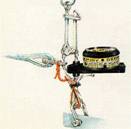
282.Which one of the listed requirements regarding liferafts do not
correspond to present regulations? Every liferaft shall be so constructed that:
- It`s canopy
has viewing ports in all directions
- It can be
dropped from a height of at least 18 metres
- It can
withstand repeated jumps from a height of 4.5 metres
- It can be
towed at a speed of 3 knots with full complement
REBO101.jpg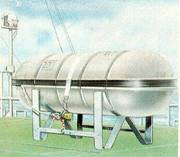
283.Which one of the listed requirements regarding 'week
links' for float free arrangements for liferafts do not correspond to
present regulations? Week links shall:
- Release the
liferaft at a depth of not more than 4 metres
- Not break by
force required to pull painter from the lifeboat container
- Be of
sufficient strength to permit inflation of the liferaft
- Break under a
strain of approximate 2.2 kN
REBO101.jpg
284.Which one of the listed requirements regarding thermal protective
aids do not correspond to present regulations? The thermal protective aids
shall:
- Cover the
whole body except the face of a person wearing a lifejacket
- Be unpacked
and easily donned in a survival craft without assistance
- Permit the
wearer to swim a short distance through the water and board a survival
craft
- Permit the
wearer to remove it in water in not more than two minutes
REBO93.jpg
285.Which one of the listed requirements regarding the use of an
immersion suit do not correspond to present regulation? The suit shall permit
the wearer to:
- Perform
normal duties during abandonment
- Swim a short
distance through the water and board a survival craft
- Climb up and
down vertical ladders from the survival craft embarkation point to the
water
- Jump from a
height of 4.5m into the water without being injured or damaging the suit
REBO93.jpg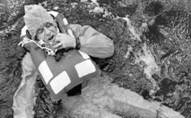
286.Which one of the listed requirements regarding liferaft equipment
do not correspond to present regulations? The normal equipment of every
liferaft shall consist of:
- Instructions
on how to survive
- Instructions
for immediate action
- One set of
fishing tackle
- Thermal
protective aids for the number of persons the liferaft is permitted to
accommodate
REBO91.jpg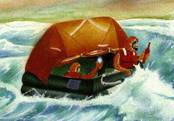
287.Which one of the listed requirements regarding hand flares do not
correspond to present regulations? The hand flare shall:
- Have a
burning period of not less than 1 minute
- Continue
burning after being immersed for 10 seconds under water
- Emit smoke of
a highly visible colour
- Have a
self-contained means of ignition
REBO91.jpg
288.Which one of the listed requirements regarding life-saving
appliances do not correspond to present regulations?
- All
prescribed life-saving appliances shall be made of non-combustible or fire
retardant material
- All
prescribed life-saving appliances shall be fitter with retro-reflective
material which will assist in detection
- All
prescribed life-saving appliances shall be of a highly visible colour on
parts where this will assist detection
- All
prescribed life-saving appliances shall be resistant to deterioration
where explosed to sunlight
REBO68.jpg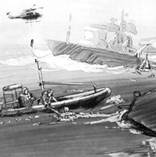
289.Which one of the listed routine test and inspections of
life-saving appliances is not required by the regulations?
- Inspection of
life-saving appliances, including lifeboat equipment shall be carried out
monthly to ensure they are complete and in good order
- Survival
crafts and rescue boats with launching appliances shall be visually
inspected weekly to ensure they are ready for use
- Lifeboat
engines to be run for at least 3 minutes every week
- General
emergency alarm to be tested daily
REBO68.jpg
290.Which one of the listed requirements regarding immersion suits do
not correspond to present regulations? The immersion suit shall be made of
waterproof materials and constructed such the
- It is
provided with arrangements to reduce free air in the legs of the suit
- It will cover
the whole body with the exception of the face
- It will have
sufficient built in buoyancy to avoid y the use of a lifejacket
- It can be
unpacked and donned without assistance within 2 minutes
REBO93.jpg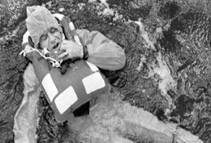
295.Which radio frequency/channels are reserved for distress, urgensy
and safety communication ?
- 2182kHz/VHF
channel 6
- 2188 kHz/VHF
channel 8
- 2182 kHz and
VHF channel 16
- 2128kHz/VHF
channel 16
COMM1.jpg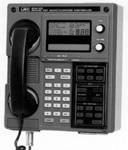
301.At what latest time shall doors, sidescuttles, gangway doors,
cargo-and coaling ports and other openings which are to be kept closed watertight
at sea be closed at the start of the voyage?
- Before
leaving the pilot station
- Before
leaving the berth
- Before
leaving the port
- Before
entering open waters
SOL10.jpg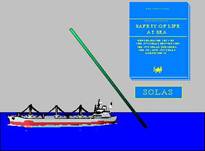
302.Which one of the listed requirements regarding rocket parachute
flares do not correspond to present regulations? The rocket parachute flares
shall:
- Have brief
instructions clearly illustrating the use of the flare
- Have integral
means of ignition
- Burn with a
bright orange colour
- Be contained
in a water-resistant casing
REBO53.jpg
303.Which one of the listed requirements regarding buoyant smoke
signals do not correspond to present regulations? The buoyant smoke signal
shall:
- Give a bright
red light during the entire emission time
- Not be
swamped in a seaway
- Emit smoke
for at least 3 minutes when floating in calm water
- Continue to
emit smoke when submerged in water for a period of 10 seconds under 10cm
of water
EVAC6.jpg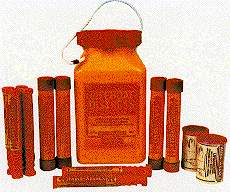
306.Which one of the listed requirements regarding lifeboat fitting do
not correspond to present regulations? All lifeboats shall be fitted with:
- Effective
means for bailing or have self-bailing arrangement
- Release
device to enable foreward painter to be released under tension
- A remotely
operated steering arrangement
- A buoyant
lifeline becketed around the outside of the lifeboat
SOL68.jpg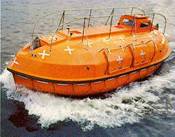
308.Which one of the listed requirements regarding lifeboat equipment
do not correspond to present regulations? The normal equipment of every
lifeboat shall include:
- Sea-charts
and navigating equipment
- A survival
manual
- Two hatches
- One copy of
prescribed lifesaving signals
FIRE35.jpg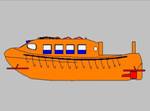
311.Which one of the listed requirements regarding freefall launching
do not correspond to present regulations? All launching appliances shall:
- Be so
arranged that no excessive force is experienced by the occupants during
launch
- Have ramp
angle and length to ensure that the survival craft effectively clears the
ship
- Have release
mechanism constructed from non-corrosive material
- Be
efficiently protected against corrosion
SOL10.jpg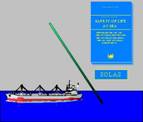
313.Which one of the listed requirements regarding the general
emergency alarm system do not correspond to present regulations? The general
emergency alarm system shall:
- Be audible
through all accomodation and crew working spaces
- Have electric
alarm bells (or claxons) powered from the ship`s main and emergency
sources of electric power
- Be capable of
operation from fire stations aboard the ship
- Be able of
sounding the emergency alarm signal by the ships whistle or siren, and
additionally on electrically operated bells or claxons
REBO45.jpg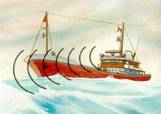
318.Which of the following types/sizes of vessels in international
trade do not have to be fitted with a radiotelephone station?
- Passenger
ships of less than 100 tons gross
- Passenger
ships carrying less than 36 passengers
- Cargo ships
of 300-1600 tons gross
- Cargo ships
below 300 tons gross
SOL86.jpg
320.Each ship fitted with a VHF radiotelephone installation shall
according to the regulations listen on the distress frequency during
navigation. Listening shall be:
- A period of 5
minutes after every half hour
- A period of 5
minutes after every full hour
- 8 hours a day
- Continous
COMM1.jpg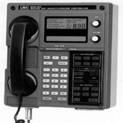
323.Which one of the listed requirements regarding portable radio
apparatus for survival crafts do not correspond to present regulations?
- Transmitter
and receiver to be tested with intervals of more than one month
- The apparatus
shall be capable of being dropped into the water without damage
- The apparatus
shall be readily portable and watertight
- New equipment
shall be as light-weight and compact as practicable
COMM13.jpg
324.Which one of the listed requirements regarding two-way
radiotelephone apparatus for survival crafts do not correspond to present
regulations?
- The apparatus
shall be operated from a battery of adequate capacity to ensure operation
for at least 4 hours
- The battery
is not recheargeable
- The apparatus
shall be capable of being operated on VHF channel 16
- While at sea,
the equipment shall be maintained in satisfactory condition
REBO68.jpg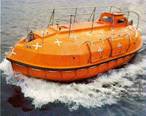
325.Which one of the listed requirements regarding VHF radiotelephone
installations do not correspond to present regulations?
- Controls for
the channels required for navigational safety shall be immediately
available on the navigating bridge, convenient to the conning position
- Facilities
should be available to permit radio communication from the wings of the
bridge
- As far as
practicable, the antenna shall have unobstructed view in all directions
- Cargo ships
of less than 500 tons gross shall this type of not have radioinstallation
COMM1.jpg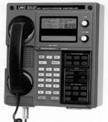
327.What is the correct definition of:-boat drill?
- To secure the
boats
- To launch the
boats
- Training in
lifeboat handling
- To drill all
boats
STABIL1.jpg
328.What does this crane signal indicate?
- Lower the
boom, raise the load
- All ok!
- Raise the
boom, lower the load
- Raise the
load
SAFEW31.jpg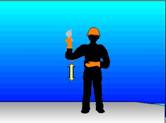
329.What does this crane signal indicate?
- Raise the
boom
- Raise the
load
- All ok!
- Raise the
boom,lower the load
SAFEW32.jpg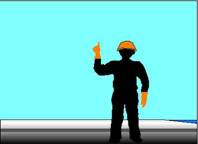
330.A combined vessel (wet/dry) is equipped with 2 Gantry Cranes and
certified to carry HC petroleum products. Crane No.1 is dedicated for hose
handling and crane No.2 has all functions interlocked when in 'Wet cargo
Mode'. The vessel is at anchor having a cargo of naphtha onboard, Chief
Eng. is requesting to have one of the cranes prepared in order to take onboard
spares. What will be the best crane to use?
- Crane No.2 if
spares are going to the engine room
- None of the
gantry cranes
- Crane No.1
- Any of the
cranes depending on where spares are going
CRAN19.jpg
331.Cargo Gear/Cranes should at regular intervals be thoroughly examined
and load tested by a recognised company/yard. How often should such
examination/load test take place?
- Every 4th
year
- Every 2 1/2
year
- Every 5th
year
- Annually
CRAN9.jpg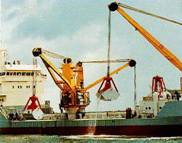
332.The vessel`s cranes are marked: 'SWL 29,5 tons x 22 M/R
(including lifting beam weight 1,5 tons)'. You are going to lift onboard a
28 tons load being placed on the berth. What will be the maximum distance from
C/L of crane to the load you are going to lift in order to have a
'safe' operation?
- 20m
- 28m
- 29,5m
- 22m
CRAN17.jpg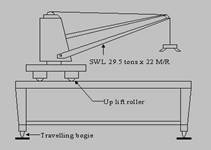
333.When should gangway nets be rigged?
- Whenever the
gangway is regarded as unsafe
- Between
sunset and sunrise
- Whenever the
gangway is rigged
- When it is
deemed necessary by the Master of the Chief Officer
SAFEW18.jpg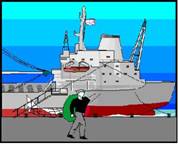
334.During mooring operations; which is the safe position to be in?
- Behind the
fairlead, but inside the zone
- Behind the
point of restraint, but inside the zone
- Between the
'point of break' and the 'fairlead'
- Outside the
coloured zone
SAFEW8.jpg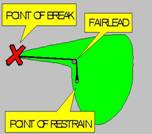
335.What kind of safety equipment must be worn during anchoring?
- All of the
mentioned equipment
- Boiler suit,
working gloves
- Safety
goggles
- Safety
helmet, safety shoes
SAFEW10.jpg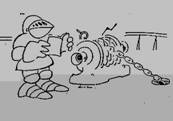
336.Which one of the following types of rope is the most dangerous to
work with?
- Manila
- Polypropylene
- Nylon
- Steel wire
SAFEW12.jpg
337.What is the strain on each of the two slings?
A. 1) 5tons
2) 5tons
B. 1) 5tons
2) 5tons
C. 1)10tons
2) 5tons
D. 1) 2tons
2) 1ton
SAFEW30.jpg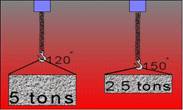
338.What is the correct definition of:-lee side?
- The side from
the wind
- Starboard
side
- Port side
- The side
against the wind
STABIL1.jpg
340.Your ship is equipped with 2 different types of grabs,small and
large, with cubic capacities of 5m3 and 10m3 respectively. Maximum crane load
for grab service is 16 tons including grab weight. You are going to discharge a
dry commodity having a stowage factor of 1,4 T/m3. What will be the suitable
grab for this operation?
- Small
- Any of them
- Large
- None of the
mentioned alternatives
CRAN20.jpg
341.Your crane is designed for Grab Service with a hoisting load of 16
tons including grab weight. Grab weight: 8 tons, Grab cubic: 10m3. You are
going to discharge a cargo of dry minerals having a stowage factor of 0,7-0,8
t/m3. What will be the maximum weight of the cargo you are allowed to have in
each grab?
- 8 tons
- 16 tons
- 7 tons
- 15 tons
CRAN9.jpg
350.What is the correct definition of:-let go?
- Cast off the
rope
- Let the
seafarers go ashore
- Leave the
ship
- Tight the
slack in a rope
ENV13.jpg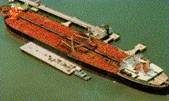
351.Ce se intelege prin reperare?
- Observarea
supravietuitorilor sau a ambarcatiunilor de salvare
- Determinarea
pozitiei supravietuitorilor sau a ambarcatiunilor de salvare
- Determinarea
teoretica a pozitiei supravietuitorilor sau ambarcatiunilor de salvare
352.Scara de imbarcare este:
- Scara de
acces la bord
- Orice scara
pe care se poate cobori in mijloacele de salvare
- Oscara de
pilot amplasata la pupa navei
- Scara
prevazuta la posturile de imbarcare ale navei ce permite accesul sigur la
ambarcatiunile de salvare dupa lansare
353.Lansarea plutelor de salvare se face prin:
- Degajare
libera
- lansare
automata
- inlaturarea
dispozitivului de siguranta si aruncarea plutei la apa
- inlaturarea
dispozitivului de siguranta
354.Costumul hidrotermic este:
- Un costum ce
nu permite intrarea apei
- Un costum de
protectie ce reduce pierderile de caldura ale corpului unei persoane
afundata in apa rece
- Un costum
imblanit
- Un costum de
scafandru
355.Mijloc gonflabil este:
- Un mijloc de
salvare cu flotabilitatea asigurata de camere nerigide umplute cu gaz ce
se pastreaza neumflat pana la momentul folosirii
- Un mijloc de
salvare cu flotabilitate asigurata de camere nerigide umplute cu gaz ce se
pastreaza tot timpul umflat
- Un mijloc de
salvare de rezerva
- Un mijloc de
salvare folosit de catre pasageri
356.Barca de urgenta este:
- Barca
destinata pentru a salva persoanele aflate in pericol si a grupa
ambarcatiunile de salvare
- Barca de
salvare cu motor
- Salupa de
croaziera a navei
- ambarcatiune
speciala destinata pescuirii persoanelor cazute in mare
357.Recuperarea este:
- Adunarea
tuturor membrilor de echipaj
- Adunarea in
siguranta a supravietuitorilor
- Colectarea
tuturor pasagerilor aflati in apa
- Preluarea
echipelor de cart, punte si masina
358.Material reflectorizant este considerat:
- Orice
material ce reflecta lumina
- banda vopsita
in argintiu ce se vede de la distanta pe timp de noapte
- vopsea
luminiscenta
- Un material
ce reflecta in directia opusa un fascicol luminos dirijat asupra sa
359.Ambarcatiunea de supravietuire este:
- barca de
salvare cu motor
- pluta de
salvare de mare capacitate
- barca de
urgenta
- ambarcatiune
ce poate sa mentina in viata persoane aflate in pericol din momentul
abandonarii navei
360.Un mijloc de protectie termica este:
- Un costum
etans ce protejeaza corpul contra temperaturilor scazute
- Un costum
confectionat dintr-un material ce nu permite schimbul de caldura
- Orice mijloc
de protectie contra frigului
- Un sac sau
costum din material impermeabil cu conductibilitate termica redusa
361.Numarul de aparate de emisie-receptie VHF bicanal pentru o nava de
marfuri de 300 TB nu mai mare de 500 TB este:
- Trei
- Doua
- Unu
- Nu sunt
necesare
362.Numarul de aparate de emisie receptie VHF bicanal pentru o nava de
pasageri sau nava de transport marfuri mai mare sau egal de 500 TR este de:
- Trei
- Doua
- Unul fix si
doua mobile
- SOLAS nu
prevede expres
363.Numarul transponderelor radar ce sunt prevazute pentru o nava de
pasageri sau nava de transport marfuri mai mare de 500 TR este:
- Unu
- Doua
- Trei
- SOLAS nu
prevede expres
364.Numarul de transpondere radar ce sunt necesare pe navele de
transport mai mare sau egal cu 300 TR dar nu mai mare de 500 TR este:
- Doua
- Nici unul
- Unu
- SOLAS nu
prevede expres
365.Transponderele radar se depoziteaza:
- In barcile de
salvare
- Pe puntea
mijloacelor de salvare langa instructiunile de lansare a acestora
- In comanda de
navigatie
- In asa fel
incat sa poata fi rapid plasate pe orice ambarcatiune de salvare
366.Radiobalizele EPIRB COSPAS/SARSAT emit pe frecventa de:
- 121,5 MHz
- 243 MHz
- 406 MHz sau
406/121,5 MHz
- 121,5 si 406
MHz
367.Radiobalizele EPIRB se plaseaza la bord:
- In barca de
salvare cu motor
- La puntea mijloacelor
de salvare
- Pe puntea de
comanda afara in bordul Bd
- Intr-un loc
astfel incat sa poata fi rapid amplasate in orice ambarcatiune de salvare
368.Dotarea navelor cu echipament GMDSS a devenit obligatorie din:
- 1990 / 1 ian
- 1996 / 1
iunie
- 1999 / 1 februarie
- 1999 / 1
iulie
370.Instalatia de alarmare generala se foloseste pentru:
- Anunturi la
bord
- Adunarea
pasagerilor si echipajului la locurile de adunare pentru declansarea
operatiunilor indicate de rolul de apel
- Comunicatii
intre compartimentele navei
- Transmiterea
informatiilor utile catre autoritati
371.Numarul minim al rachetelor de semnalizare depozitate pa sau langa
puntea de navigatie este:
- 6 rachete
parasuta albe si 6 rachete parasuta verzi
- 12 rachete
parasuta rosii
- 6 rachete
parasuta albe si 6 rachete parasuta rosii
- 8 rachete
parasuta de culori diferite
372.Colacii de salvare trebuie sa fie fixati:
- Pe suporturi
fixe, pe toate puntile navei
- Pe suporturi
fixe asigurati cu saule, pe puntile ce se extind pana la bordajul navei
- In locuri
adapostite de valuri
- Astfel incat
sa poata fi imediat accesibili in ambele borduri ale navei si pe cat
posibil pe toate puntile deschise ce se extind pana la bordajul navei
373.Care este procentajul minim de colaci prevazuti cu lumini cu
autoaprindere?
- 25%
- 50%
- 75%
- 100%
374.Ce se scrie cu majuscule pe toti colacii de salvare?
- Numele navei
- Numele navei
si compania armatoare
- Numele navei
si portul de inmatriculare
- Numele navei
si portul de inregistrare cu majuscule si in caractere latine
375.Numarul minim al vestelor de salvare aflate la bordul navelor de
transport marfuri va fi:
- Egal cu
numarul de posturi din barca de salvare
- Egal cu
numarul membrilor de echipaj +25%
- Egal cu
numarul de persoane plus un numar suficient pentru personalul de cart si
pentru folosirea la posturile indepartate ale ambarcatiunilor de salvare
- SOLAS nu
precizeaza exact
376.Vestele de salvare gonflabile trebuie sa sustina persoana ce o
foloseste daca:
- Se umfla
partial
- Se umfla
total
- Se umfla 50%
din compartimente
- Se umfla
numai partea din spate si gulerul
377.Unde se afiseaza rolul de apel si instructiunile in caz de
urgenta:
- In comanda,
careuri, puntea mijloacelor de salvare la locuri vizibile
- In comanda,
careuri si pe holuri la locuri vizibile
- In locuri
vizibile pretutindeni pe nava inclusiv puntea de comanda, incaperile de
masini si de locuit pentru echipaj
- oriunde
exista locuri propice afisajului
378.Instructiunile de exploatare pentru mijloacele de salvare se
afiseaza:
- In conditii
de vizibilitate ale iluminatului de avarie
- La puntea
barcilor
- Pe comanda de
navigatie
- In careurile
echipajului, pe comanda si in sala masini
379.Simbolurile folosite in afisajele de 'Safety' vor fi:
- Simboluri
standard conforme cu administratia de pavilion
- Simboluri
standard ale nationalitatii majoritare a echipajului
- Simboluri
standard engleze
- Simboluri
conforme cu recomandarile Organizatiei
380.Persoanele desemnate pentru conducerea ambarcatiunilor de salvare
vor fi:
- Ofiteri de
punte
- Ofiteri de
punte sau o persoana brevetata
- Orice ofiter
sau persoana brevetata sau certificata
- Orice
persoana cu abilitati / cunostinte in manevrarea si conducerea
ambarcatiunilor de salvare
381.Ce trebuie sa aiba stabilita in plus o ambarcatiune cu motor:
- persoana care
va supraveghea functionarea motorului si va executa reglaje minore!
- Un ofiter
mecanic
- Un motorist
cel putin
- Orice
persoana apta de a opera motorul barcii si agregatele anexa
382.Persoanele desemnate pentru conducerea mijloacelor de salvare
trebuie sa fie repartizate:
- Echitabil
pentru toate ambarcatiunile de salvare
- Cu precadere
pentru mijloacele cu motor
- Numai pentru
barcile de salvare
- Numai pentru
barcile de salvare si barca de urgenta
383.Unde se plaseaza barcile si plutele de salvare pentru care se cer
instalatii de salvare?
- La puntea
barcilor
- La
extermitatile navei
- Cat mai
aproape posibil de incaperile de locuit si serviciu
- In locuri
special amenajate si usor accesibile personalului de la bord
384.Unde se prevad a se stabili posturile de adunare?
- Cat mai
aproape de posturile de imbarcare
- In incaperile
de folosinta comuna ale navei
- Pe puntea
barcilor
- Pe puntea de
comanda pentru a fi usor de supravegheat de comandant
385.Posturile de adunare si imbarcare vor fi iluminate:
- De reteaua
curenta a navei
- De o sursa
independenta de curent cu tensiune normala
- De un generator
amplasat in apropiere
- De o
instalatie de iluminat alimentata de la sursa electrica de avarie
386.Coridoarele, scarile si iesirile ce conduc la posturile de adunare
si de imbarcare vor fi marcate cu:
- Linii rosii
continui
- Linii rosii
continui trasate cu vopsea fosforescente
- Sageti din
materiale reflectorizante
- Postere si
indicatii de acces
387.Ambarcatiunile de salvare se amplaseaza astfel incat:
- Sa nu
stanjeneasca manevra nici unei alte ambarcatiuni de salvare sau a barcii
de urgenta de la orice alt post de lansare la apa
- Sa fie la
distanta minima de 3 m de orice alta ambarcatiune de salvare
- Sa fie egal
distribuite pe ambele borduri
- Sa fie la
punti diferite si sa nu fie stanjenite de elicea navei
388.Echipamentul mijloacelor de salvare colective trebuie sa fie
depozitat:
- In fiecare
mijloc de salvare echipamentul complet alocat
- In magazii
apropiate gata oricand de ambarcare in mijloacele de salvare
- Pe puntea de
comanda in lazi etanse pentru a putea fi usor verificat si ambarcat in caz
de urgenta
- SOLAS nu prevede
expres
389.Eliberarea barcilor de salvare din dispozitivele de fixare trebuie
sa se poata face:
- Manual
- Usor, rapid,
automat
- Manual si
automat
- Automat la
atingerea suprafetei marii
390.La ce adancime se declanseaza automat plutele de salvare ce au
ramas pe nava la scufundare?
- 10 metri
- 6 metri
- 4 metri
- 12 picioare
391.Care este baremul de timp pentru lansarea barcii de urgenta?
- 3 min
- 5 min
- 1 minut
- Cat mai
repede posibil pentru a-si dovedi eficienta maxima
392.Care sunt unghiurile de asieta si banda maxime ce permit lansarea
ambarcatiunilor de salvare din dispozitive?
- 10 grade
asieta si 20 grade banda
- 5 grade
asieta si 15 grade banda
- 10 grade
asieta si 15 grade banda
- 5 grade
asieta si 20 grade banda
393.Cate tipuri de mecanisme de decuplare pentru ambarcatiunile de
salvare de acelasi tip aflate la bord se folosesc?
- Cate un tip
pentru fiecare ambarcatiune
- Un singur tip
pentru toate ambarcatiunile de acelasi tip
- SOLAS nu
precizeaza expres
- la discretia
constructorului
394.Care este frecventa exercitiilor de abandon a navei pentru
echipaj?
- Saptamanal
- De 2 ori pe
luna
- Lunar
- Saptamanal cu
lansarea a minim o barca pe luna si cu manevrarea prin apa la cel putin 3
luni pentru fiecare barca
395.Exercitiile de abandon se noteaza in:
- Jurnalul de
bord
- Jurnalul de
bord, dosarul de siguranta si caietul de cart
- Jurnalul de
bord, Jurnalul de roluri si antrenamente echipaj
- Nu este
obligatorie inregistrarea acestora
396.Inainte de parasirea postului si pe timpul voiajului, mijloacele
de salvare trebuie sa functioneze:
- In totalitate
si pe toata durata
- Numai la
plecarea in voiaj
- In proportie
de 75%
- Numai pe
timpul controalelor de clasa si autoritatilor
397.Plutele de salvare suplimentare se amplaseaza pentru:
- Navele a
caror distanta de la locul amplasarii mijloacelor de salvare pana la o
extremitate este de 50 m
- Navele a
caror distanta de la locul amplasarii mijloacelor de salvare pana la o
extremitate este de 100 m
- Navele a
caror distanta de la locul amplasarii mijloacelor de salvare pana la o
extremitate este de 75 m
- Pe orice tip
de nava indiferent de lungime
398.Luminile vestelor de salvare trebuie sa indeplineasca urmatoarele
conditii:
- Sa aiba o
intensitate luminoasa de minim 0,75 candeli
- Sa lumineze
minim 8 ore
- Sa fie
vizibila pe un sector circular
- Sa aiba o intensitate
luminoasa de minim 0,75 candeli, sa lumineze minim 8 ore pe un sector cat
mai larg din emisfera superioara
399.Luminile cu sclipiri din dotarea vestelor de salvare trebuie sa
aiba o frecventa de:
- Minim 100
sclipiri pe minut
- Minim 50
sclipiri pe minut
- Minim 25
sclipiri pe minut
- 12 sclipiri
pe minut
400.Un costum hidrotermic trebuie sa permita celui ce-l poarta:
- Urcarea si
coborarea scarilor de cel putin 5 m
- Sa execute
sarcinile de abandon
- Sa sara de la
4,5 m si sa inoate pe distanta scurta
- Toate
401.Mijloacele de protectie termica trebuie sa functioneze
satisfacator pentru temperaturi ale aerului intre:
- Minus 30
grade C la plus 20 grade C
- Minus 30
grade C la plus 30 grade C
- Minus 25
grade C la plus 25 grade C
- Minus 20
grade C la plus 20 grade C
402.Un mijloc de protectie termica reduce pierderea de caldura prin:
- Convectie
- Evaporare
- Stocare
- Convectie si
evaporare
403.Care este durata minima de ardere a unei facle de mana?
- 6 min
- 5 min
- 3 min
- 1 min
404.Care este durata minima de ardere sub apa la 100 mm adancime
pentru o facla de mana?
- 20 sec
- 15 sec
- 10 sec
- 5 sec
405.Care este durata minima de emitere de fum cu debit uniform la
plutirea in apa linistita pentru un semnal combinat?
- 1 min
- 3 min
- 5 min
- Cat mai mult
posibil
406.Care este durata minima de emitere de fum pentru un semnal fumigen
scufundat in apa la 100 mm adancime?
- 3 min
- 5 min
- 7 min
- 10 m
407.Care este durata de rezistenta la intemperii in stare de plutire
in orice conditie de stare a marii pentru o pluta de salvare?
- 10 zile
- 15 zile
- 20 zile
- 30 zile
408.Care este inaltimea maxima de lansare la apa a unei plute normale
incat atat pluta cat si echipamentul ei sa poata fi folosite in conditii
normale?
- 18 m
- 15 m
- 20 m
- 12 m
409.Care este inaltimea de la care se poate sari repetat in pluta de salvare
de catre persoanele ce se ambarca atat cu / cat si fara cort ridicat?
- 3 m
- 2,5 m
- 6 m
- 4,5 m
410.Care este viteza de remorcare in apa calma, pentru o pluta de
salvare complet incarcata si echipata?
- 2,5 Nd
- 3 Nd
- 3,5 Nd
- 4 Nd
411.Cate intrari trebuie sa aiba plutele de salvare autorizate sa
preia mai mult de 8 persoane?
- Cel putin 3
dispuse la 120 grade
- Cel putin 2
dispuse diametral
- Cel putin 4
dispuse la 90 grade
- Una singura
412.Care este numarul minim de hublouri de observare cu care trebuie
sa fie prevazuta o pluta de salvare?
- Minim unu
- Minim 2
dispuse diametral
- Minim 3
dispuse la 120 grade
- SOLAS nu
prevede expres
413.Care este greutatea maxima totala a unei plute de salvare a
containerului si echipamentului, care nu se lanseaza cu un dispozitiv de lansare
aprobat?
- 90 Kg
- 120 Kg
- 165 Kg
- 185 Kg
414.In cat timp trebuie sa primeasca o pluta de salvare lansata din
grui de pe navele de marfa intreaga incarcatura de persoane de la lansarea
semnalului de ambarcare?
- 2 min
- 3 min
- 4 min
- 5 min
415.La ce interval de timp se face verificarea plutelor de salvare si
echipamentului acestora in instalatiile specializate autorizate de fabricant?
- La 6 luni
- Annual
- La 18 luni
- La intrarea
navei in santier
416.Care este materialul pirotehnic minim necesar pentru o pluta de
salvare?
- 4 rachete
parasuta, 6 facle de mana, 2 semnale fumigene plutitoare
- 4 rachete
parasuta, 6 facle de mana, un semnal fumigen plutitor
- 2 rachete
parasuta, 4 facle de mana, un semnal fumigen plutitor
- 4 rachete
parasuta si 6 facle de mana
417.Cate kilocalorii trebuie sa asigure ratiile de hrana pentru
fiecare persoana din pluta de salvare?
- 5000 Kcal
- 4000 Kcal
- 2800 Kcal
- 6000 Kcal
418.Care este cantitatea minima de apa pentru fiecare persoana din
pluta de salvare?
- 1 litru
- 2 litri
- 2,5 litri
- 1,5 litri din
care 0,5 litri poate fi inlocuit de un aparat de desalinizare
419.Care este numarul minim de mijloace de protectie termica ce
trebuie sa se gaseasca in fiecare pluta de salvare?
- Pentru 20%
din numarul de persoane pe care pluta este autorizata a le prelua
- Pentru 15%
din numarul de persoane pe care pluta este autorizata a le prelua
- Pentru 10%
din numarul de persoane pe care pluta este autorizata a le prelua
- Nu sunt
necesare
420.La ce adancime dispozitivul de eliberare automat trebuie sa
elibereze pluta de salvare?
- 2 m
- 3 m
- 3,5 m
- 4 m
421.Cate din compartimentele plutelor gonflabile pot fi avariate fara
a diminua capacitatea plutei?
- Un
compartiment
- 50% din
compartimente
- 25% din
compartimente
- 2
compartimente diametral opuse
422.Care este presiunea la care trebuie sa reziste un compartiment
gonflat al unei plute de salvare?
- Presiunea
normala a plutei
- Presiunea
dubla normala de lucru
- Presiunea
tripla normala de lucru
- Presiunea de
1,5 Bari
423.Capacitatea plutei gonflabile se determina ca fiind:
- Cel mai mare
numar intreg obtinut prin impartirea volumului total al camerelor de aer
in m cubi la 0,096
- persoana
pentru fiecare metru din circumferinta exterioara a plutei
- persoana
pentru fiecare 18 Kg din greutatea plutei
- Cel mai mare
numar intreg obtinut prin impartirea volumului total al camerelor de aer
in metri cubi la 0,082
424.O barca de salvare trebuie sa poata fi lansata la apa cand nava
este in mars cu o viteza maxima de:
- 3 Nd
- 4 Nd
- 4,5 Nd
- 5 Nd
425.Corpurile si acoperisurile rigide ale barcilor trebuie sa fie fabricate
din materiale:
- Cu intarziere
la foc sau necombustibile
- Din orice fel
de material
- Din materiale
combustibile
- Din acelasi
material cu corpul barcii de salvare
426.Greutatea totala teoretica pentru o persoana ambareata in barca de
salvare fata de care se determina capacitatea barcii este:
- 75 Kg
- 90 Kg
- 100 Kg
- 110 Kg
427.Robustetea barcilor cu corp metalic este suficienta daca suporta
fara deformari reziduale:
- De 1,1 ori
greutatea totala a barcii incarcata complet cu persoane si echipament
- de 1,25 ori
greutatea totala a barcii incarcata completcu persoane si echipament
- De 1,5 ori
greutatea totala a barcii incarcata complet cu persoane si echipament
- De 1,75 ori
greutatea totala a barcii incarcata complet cu persoane si echipament
428.Inaltimea maxima de cadere libera in apa ce poate fi suportata de
o barca de salvare complet echipata si cu persoane la bord este de:
- 2,5 m
- 3,5 m
- 3 m
- 4,5 m
429.Capacitatea maxima a barcilor de salvare este limitata la:
- 100 persoane
- 125 persoane
- 150 persoane
- 175 persoane
430.Suprafetele pe care merg persoanele in barcile de salvare
trebuiesc acoperite cu:
- Vopsea
- Podele de
lemn
- Gratare de
lemn
- Material
antiderapant
431.Bordul liber minim al barcilor de salvare determinat cu 50% din
numarul de persoane pe care-l pot prelua stand intr-un singur bord trebuie sa
fie:
- 1,5% din
lungimea barcii sau 100 mm oricare este mai mare
- 2,5% din
lungimea barcii sau 200 mm oricare este mai mare
- 225 mm
- 150 mm
432.Ce tip de motoare sunt aprobate pentru propulsia barcii de salvare
- Cu aprindere
prinscanteie
- Cu aprindere
prin compresie
- Cu aburi
- Electric
433.Care este temperatura minima si timpul necesar de start al
motorului barcii de salvare?
- minus 18
grade si 3 min
- minus 15
grade si 3 min
- minus 15
grade si 2 min
- minus 12
grade si 2 min
434.Care este timpul minim de functionare a motorului cand barca de
salvare nu se gaseste in apa?
- 2 min
- 3 min
- 5 min
- 10 min
435.Viteza minima de mars inainte pentru o barca de salvare cu motor
complet incarcata cu numarul de persoane prevazut si echipament complet si cu
tot echipamentul auxiliar in functiune este de:
- 4 Nd
- 5 Nd
- 5,5 Nd
- 6 Nd
436.Viteza minima de mars inainte pentru o barca de salvare cu motor
complet incarcata ce remorcheaza o pluta de salvare de 25 persoane complet
incarcata trebuie sa fie:
- 1,5 Nd
- 2 Nd
- 2,5 Nd
- 3 Nd
437.Cand sunt obligatorii patinele si amortizoarele pentru prevenirea
avarierii barcii?
- Pentru
barcile ce se lanseaza de-a lungul bordajului
- Pentru
barcile ce se lanseaza prin pupa
- Pentru
barcile cu lansare prin cadere libera
- Pentru barcile
de urgenta
438.Sursa de lumina din interiorul barcii de salvare trebuie sa
asigure iluminatul timp de:
- 6 ore
- 12 ore
- 18 ore
- 24 ore
439.Care este numarul minim de cangi ce trebuie sa existe intr-o barca
de salvare?
- Una
- Doua
- Depinde de
capacitate
- Niciuna
440.Care este numarul de topoare cu saula ce trebuie sa existe intr-o
barca de salvare?
- Doua, cate
unul la fiecare extremitate
- Un topor la
prova
- Un topor la
seful de barca
- Depinde de
capacitatea barcii
441.Care este cantitatea minima de apa ce trebuie sa existe pentru
fiecare membru al barcii de salvare?
- 3 litri de
fiecare persoana autorizata sa transporte
- 3 litri de
fiecare persoana autorizata sa transporte din care 1 litru poate fi
inlocuit de un aparat de desalinizare
- 3,5 litri de
persoana
- Oricat este
posibil dar nu mai putin de 3 litri
442.Cate calorii trebuie sa contina ratiile de hrana pentru fiecare
persoana autorizata sa transporte barca de salvare?
- 3500 cal
- 4500 cal
- 5000 cal
- 6000 cal
443.Materialele pirotehnice necesare barcii de salvare sunt:
- 4 rachete
parasuta, 6 facle de mana si un semnal fumigen
- 4 rachete
parasuta, 8 facle de mana si 2 semnale fumigene
- 4 rachete
parasuta, 6 facle de mana si 2 semnale fumigene portocalii
- In functie de
capacitatea barcii de salvare
444.Numarul colacilor de salvare cu saula de 30 metrii pentru fiecare
barca de salvare trebuie sa fie:
- Unu
- Doi
- In functie de
capacitatea barcii
- SOLAS nu
prevede expres
445.Mijloacele de protectie termica necesare in barca de salvare
trebuie sa asigure:
- Minim 10% din
numarul autorizat de persoane
- Minim 15% din
numarul autorizat de persoane
- Minim 20% din
numarul autorizat de persoane
- In functie de
capacitatea barcii si la discretia Administratiei
446.Numele navei si portul de inregistrare se inscriu pe barca de
salvare:
- La prova,
vizibil de sus
- La prova in
fiecare bord cu litere latine, vizibil de sus
- La pupa
navei, pe fiecare bord
- Pe tenda de
acoperire a barcii vizibil de sus
447.Numarul de aparate de lansare a bandulei la bordul unei nave
trebuie sa fie de:
- Doua
- Trei
- Patru
- In functie de
tonajul brut al navei
448.Manualul de instruire trebuie sa contina:
- Instructiuni
si informatii asupra mijloacelor de salvare din dotarea navei si cele mai
bune metode de supravietuire
- Explicatii
privind intretinerea si operarea mijloacelor de salvare
- Notiuni de
stabilitate si asieta pentru nava avariata
- Notiuni de
marinarie generala
449.O lista de control 'Cheklist' va cuprinde:
- Obiectivele
de verificat pentru o anumita activitate, la un moment dat
- Echipamentul
de salvare si supravietuire
- Etape in
intretinerea echipamentelor de salvare
- Instructiuni
de operare pentru echipamentele cu grad de risc ridicat
450.O barca de salvare partial inchisa este o barca:
- Care are
acoperisuri rigide pe cel putin 50% din suprafata
- Care prezinta
acoperisuri permanente pe cel putin 20% din lungime incapand din pupa
- Care prezinta
acoperisuri permanente pe cel putin 20% din lungime incepand din prova
- Cu acoperis
demontabil
451.O barca de salvare partial inchisa cu redresare automata este o
barca de salvare partial inchisa care:
- Se redreseaza
din orice pozitie
- Se redreseaza
numai cu echipajul la bord care-I fixeaza perfect centrul de greutate
- Se redreseaza
in mod normal sau automat complet sau partial incarcata cu echipajul fixat
in centurile de siguranta
- Se redreseaza
mai usor decat o barca de salvare normala
452.O barca de salvare complet inchisa este o barca de salvare care
are:
- Un acoperis
semirigid de la prova la pupa
- Un acoperis
care inchide complet barca de salvare
- Un acoperis
combinat rigid si tenda ce poate fi etansat
- Un acoperis
rigid pe toata suprafata
453.Pe partea superioara a barcii de salvare inchise se inscrie:
- Indicativul
de apel al navei
- Numele navei
si indicativul de apel
- Numele navei
si portul de inregistrare
- Indicativul
navei si portul de inregistrare
454.Culoarea folosita pentru mijloacele de salvare este:
- Rosie
- Portocalie
- Portocalie
luminiscenta
- Alba
reflectorizanta
455.Barcile de salvare protejate la foc trebuie sa fie dotate cu:
- Instalatie cu
CO2
- Instalatie de
pulverizare a apei
- Instalatie de
stins incendiu cu Haloni
- instalatie de
protectie la foc combinata, eficienta pentru a rezista timp indelungat la
actiunea focului
456.Barcile de urgenta sunt barcile care:
- Au o lungime
de minim 3,5 m sau maxim 8 m si pot transporta 5 persoane in pozitia sezut
si una lungita
- Orice fel de
barca cu viteza mare
- Orice barca
de viteza rigida ce poate transporta de urgenta o persoana ranita
- Au dimensiuni
mici si se folosesc doar in situatii speciale
457.Echpamentul barcii de urgenta trebuie sa fie asigurat in interiorul
barcii:
- In totalitate
- In
totalitate, mai putin cangile
- Numai
echipamentul de interventie
- SOLAS nu
prevede expres
458.Barcile de urgenta trebuie sa aiba fixat un dispozitiv de
remorcat:
- Cu caracter
permanent
- Cu caracter
permanent si rezistent pentru remorcarea si manevrarea plutelor de salvare
- Cu caracter
temporar
- Detasabil din
lipsa de spatiu
459.La ce interval de timp se intorc curentii de la vinciurile de
lansare a barcilor de salvare?
- 24 luni
- 36 luni
- 30 luni
- 48 luni
460.Care este viteza minima de ridicare a barcilor de salvare cu o
instalatie cu grui si vinci?
- 1m/s
- 0,5m/s
- 0,3m/s
- 0,25m/s
461.Scarile de ambarcare a personalului in barcile de salvare trebuie
sa aiba trepte:
- De L=480mm;
l=115m; g=25mm
- De L=450mm;
l=120m; g=30mm
- De L=480mm; l=115m;
g=30mm
- De L=450mm;
l=115m; g=25mm
462.Distanta dintre 2 trepte ale scarii trebuie sa fie de:
- Minim 300mm
sau cel mult 380mm
- Minim 280mm
sau cel mult 350mm
- Minim 300mm
sau cel mult 350mm
- Minim 310mm
sau cel mult 370mm
463.Comunicatii 'bridge to bridge' inseamna:
- Comunicatii
prin VHF
- Comunicari
prin telefonie mobila
- Comunicatii
de siguranta intre doua nave efectuate din locul din care se conduce in
mod normal o nava (puntea de navigatie)
- Comunicare
intre diferite compartimente ale navei
464.Ascultarea continua este:
- Ascultarea
radio neintrerupta
- Ascultarea
permanenta VHF
- Ascultarea
radio neintrerupta decat pentru intervale scurte cand capacitatea de
receptie a navei este blocata de
propriile comunicari
- Legatura
permanenta cu o alta nava aflata in situatie de pericol
465.Prin localizare se intelege:
- Reperarea
unei nave cu mijloace de goniometrie
- Reperarea
mijloacelor de salvare in deriva
- Reperarea
aeronavelor
- Reperarea
navelor, aeronavelor, unitatilor sau persoanelor aflate in pericol
466.Prin informatii de siguranta a navigatiei se intelege:
- Avize de
navigatie
- Avize de
furtuna
- Avize de
gheata
- Avize de
navigatie si meteo, buletine meteo si alte mesaje urgente privind
siguranta, transmise navelor
467.Zona Maritima A4 este:
- Zona inclusa
in aria de acoperire a unei statii VHF
- Zona inclusa
in aria de acoperire a unei statii radiotelefonice de coasta (medie
frecventa)
- zona
acoperita de un satelit geostationar
- Zona in afara
Zonelor Maritime A1; A2 si A3
468.Grupul de litere SOS reprezinta:
- Un semnal de
pericol
- Un semnal de
siguranta
- Un semnal de
urgenta
- Un semnal de
conectare a unei nave cu statia de coasta
469.Serviciul International NAVTEX este serviciul de transmitere
coordonata si receptie automata a informatiilor privind siguranta navigatiei
maritime in sistemul:
- Telegrafie cu
imprimare directa cu banda ingusta
- Radiotelefonie
in banda intermediara
- Radiotelefonie
de inalta frecventa
- Radiotelefonie
prin satelit
470.Serviciul NAVTEX international foloseste frecventa:
- 2182,5KHz
- 1605KHz
- 518KHz
- 156,7MHz
471.Serviciul NAVTEX international foloseste limba:
- Franceza
- Limba zonei
de navigatie
- Engleza
- Esperando
472.INMARSAT este:
- Organizatia
Internationala pentru Transmisiuni
- Organizatia
Internationala pentru Comunicatii Maritime prin Satelit
- Organizatia
maritima Internationala
- Organizatia
internationala pentru transmisiuni maritime
473.DSC inseamna:
- Distress
Selective Calling
- Digital
Selective Calling
- Distance
Securing Calling
- Digital
Securing Calling
474.Zona Maritima A1 este zona in care comunicatiile sunt acoperite
de:
- Cel putin o
statie radiotelefonica de coasta VHF
- Cel putin o
statie radiotelefonica de coasta VHF care sa asigure continu alertarea DSC
VHF
- statie
radiotelefonica de coasta si o statie mobila maritima
- Minim 3
statii radiotelefonicede coasta cu alertare continua DSC
475.Zona Maritima A2 este zona in care comunicatiile sunt acoperite de
cel putin:
- statie VHF cu
alertare continua DSC
- statie Radio
in Medie frecventa fara alertare DSC
- statie
radiotelefonica de coasta in medie frecventa cu alertare continua DSC MF
- statie
radiotelefonica de coasta in unde scurte cu DSC
476.Zona Maritima A3 este zona in care comunicatiile sunt acoperite de
cel putin:
- statie
radiotelefonica de coasta VHF cu alertare DSC si o statie de Medie
frecventa
- statie
radiotelefonica de coasta in Medie frecventa cu alertare DSC si o statie
pentru unde scurte cu alertare DSC
- Un satelit
geostationar INMARSAT in care se asigura alertare continua prin satelit
- Un satelit
INMARSAT, o statie de coasta in Medie frecventa si o statie de coasta VHF
477.Cerintele SOLAS pentru nave in ceeace priveste transmiterea
mesajelor de pericol de la nava la coasta sunt:
- Cel putin 2
mijloace separate independente fiecare folosind un serviciu diferit de
radiocomunicatii
- radiobaliza
EPIRB si o statie radiotelegrafica de medie frecventa
- radiobaliza
EPIRB si un radiotelefon fix cu DSC
- radiobaliza
EPIRB, un telex INMARSAT si un radiotelefon cu DSC
478.Iluminarea statiilor radio de la bord se face:
- De la sursele
de energie electrica principale
- De la sursa
de rezerva GMDSS
- De la
sistemul general de avarie al navei
- De la tabloul
principal de distributie
479.Statia radio a navei va fi marcata cu:
- Indicativul
de apel al navei
- Codul IMMS
- Indicativul
de apel, codul IMMS si numarul de telex / satelit
- Indicativul
de apel, identitatea statiei, si cu alte coduri pentru operarea statiei
radio
480.Comanda canalelor VHF trebuie sa fie asigurata din urmatoarele
puncte ale puntii de navigatie:
- In apropierea
pozitiei de guvernare
- In ambele
borduri
- Prin
folosirea echipamentului portabil din orice punct
- In apropierea
pozitiei de guvernare si cand este necesar de pe partile laterale ale
puntii de navigatie
481.Sistemul GMDSS corespunzator Zonei Maritime A4 trebuie sa asigure:
- Legatura cu
orice punct al globului
- Comunicatii cu
intregul glob mai putin zonele polare
- Receptia si
transmiterea apelurilor de pericol din/spre orice statie terestra si
Maritima mobila
- Comunicatii
nava-nava
482.DSC VHF transmite alerte de primejdie pe canalul :
- VHF / CH.16
- VHF / CH.70
- VHF / CH.6
- VHF / CH.13
483.Termenul EPIRB semnifica:
- Emergency
Position Indicating Radio Beacon
- Nava in
pericol
- Apel fals de
pericol pe mare
- Nava in
pericol ce-si transmite pozitia
484.Codul International de semnale se utilizeaza pentru:
- Comunicatii
nava-nava
- Comunicatii
nava-autoritati
- Comunicatii
nava-echipe de salvare
- Legatura
intre nave-puncte de supraveghere de coasta si ambarcatiunile de salvare
in caz de pericol
485.Semnificatia pavilionului 'B' din Codul International
este:
- Am scafandru
la apa
- Pescuiesc cu
plase / carlige laterale
- Am persoane
bolnave la bord
- Ambarc,
debarc, transport marfuri periculoase bunkerez sau transfer bunker la/ de
la alta nava
486.Semnificatia pavilionului 'A' din Codul International
este:
- Am scafandru
la apa, navigati cu precautiune si reduceti viteza in apropiere
- Adunarea
echipajului la bord
- Nava in
carantina sanitara
- Nava
stanjenita de pescaj
487.Semnificatia pavilionului 'G' din Codul International
este:
- Am marfuri
periculoase la bord
- Nava cu
capacitate de manevra redusa
- Nava gata de
a parasi portul
- Am nevoie de
pilot
488.Semnificatia pavilionului 'H' din Codul International
este:
- Am nevoie de
pilot
- Astept
instructiuni de debarcare
- Cer libera
practica
- Am pilot la
bord
489.Cand o nava nu are pavilionul tarii in care face escala cu ce
pavilion de cod il inlocuieste?
- Litera
'A'
- combinatie de
pavilioane reprezentand indicativul de apel al navei
- Pavilioanele
'G' si 'N' ridicate pe aceeasi verticala 'G'
sus
- Litera
'H'
490.Care este locul de pe nava unde se arboreaza pavilionul statului
de escala:
- La catargul
prova
- La bastonul
pupa
- La catargul
principal pe prima saula din Td
- La picul
catargului pupa
491.Semnificatia pavilionului 'Q' din Codul International
este:
- Cer libera
practica sanitara
- Cer pilot
- Prezenta
echipajului la bord
- Cer urgent
ajutor medical
492.Semnificatia pavilionului 'P' din Codul International
este:
- Adunarea
echipajului la bord, nava gata de plecare
- Pescuim, nu
deranjati
- Executam
lucrari la elica
- Pituram
corpul navei, tineti-va la distanta
-
493.Semnificatia pavilionului 'O' din Codul International
este:
- Ambarc,
debarc, transport marfuri periculoase
- Ocoliti-ma
sunt esuat pe un banc
- Suntem
pregatiti pentru interventie
- Om la apa,
feriti zona de recuperare
494.Un semnal format din 7 sunete scurte transmis prin soneriile de
alarma ale navei inseamna:
- Abandonarea
navei
- Incendiu la
bord
- Adunarea
echipajului in salon pentru comunicari
- Pasagerii sa
se prezinte la controlul autoritatilor
495.Care sunt mijloacele cu care se pot transmite semnale morse
luminoase de la nava?
- Proiector
- Lampa ALDIS
- Lampile fixe
de la crucetele catargelor
- Toate
mijloacele de la a,b si c
496.Ce semnificatie are semnalul 'Doua bule negre ridicate pe
aceeasi verticala la catargul principal'?
- Nava
stanjenita de pescaj
- Nava cu
capacitate de manevra redusa
- Nava in
deriva
- Nava
nestapana pe manevra
497.Ce semnificatie are semnalul un cilindru negru pe verticala la
catargul principal:
- Nava
nestapana pe manevra
- Nava
stanjenita de pescaj
- Nava in
carantina
- Nava ce
pescuieste cu traulul
498.Care este semnificatia semnalului bula-bicon-bula negre, ridicate
pe aceeasi verticala la Catargul Principal
- Nava cu
capacitate de manevra redusa
- Nava in
deriva
- Nava
nestapana pe manevra
- Nava fara
echipaj
499.Cum se semnalizeaza o epava pe timp de zi?
- Bula de
ancora si 2 bule negre la catarg
- 3 bule negre
la catarg
- Bula neagra
la prova si bula neagra la pupa
- Un cilindru
si o bula la catarg
500.Cand o nava este scutita de a acorda ajutor unei nave aflate in
pericol?
- Cand
marfurile transportate de aceasta sunt incompatibile cu interventia ceruta
- Cand prin
interventia receptiva se pune in pericol ea insasi
- Cand trebuie
sa ajunga la destinatie fara intarziere
- Cand este o
nava de linie













































































































































































































